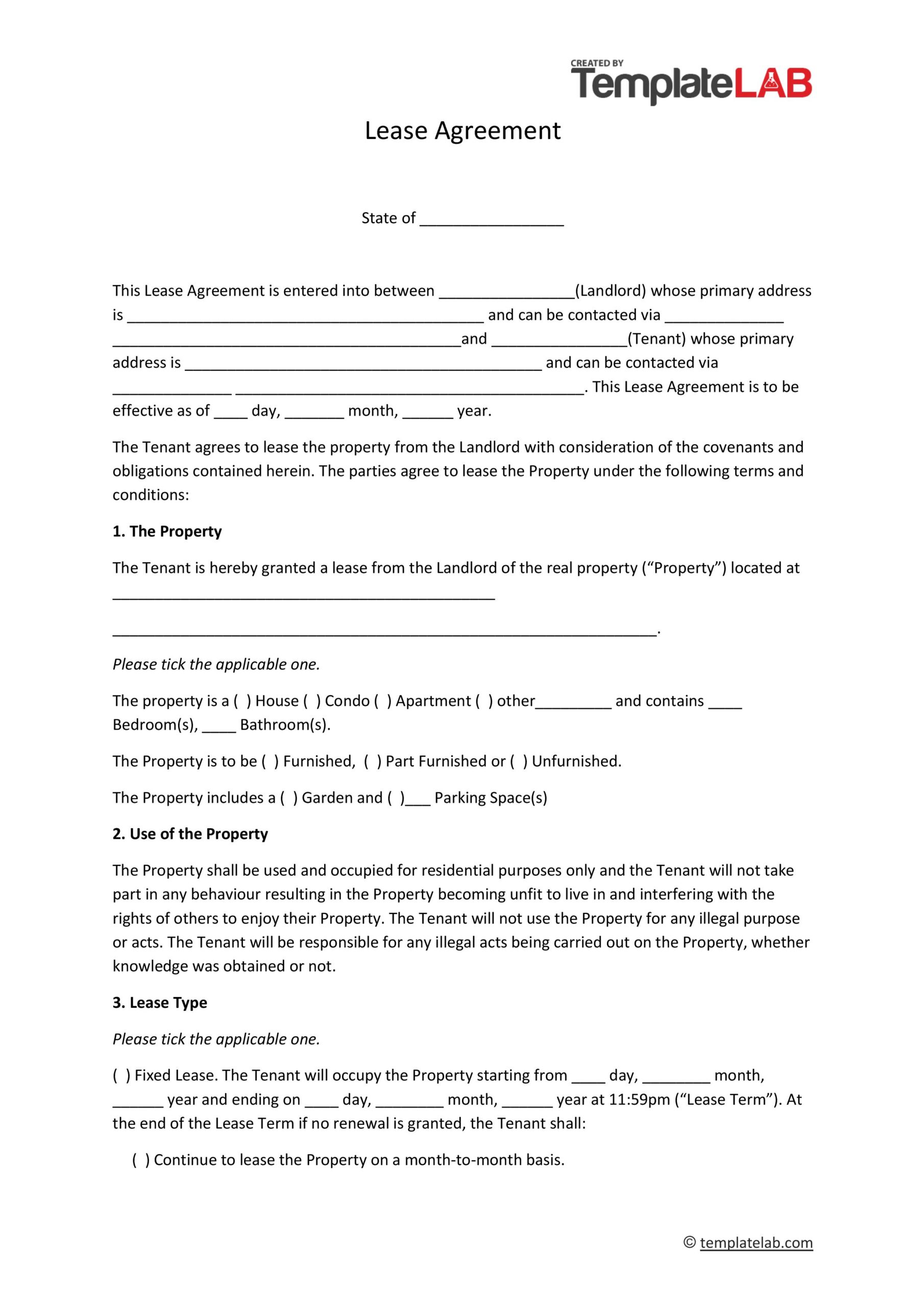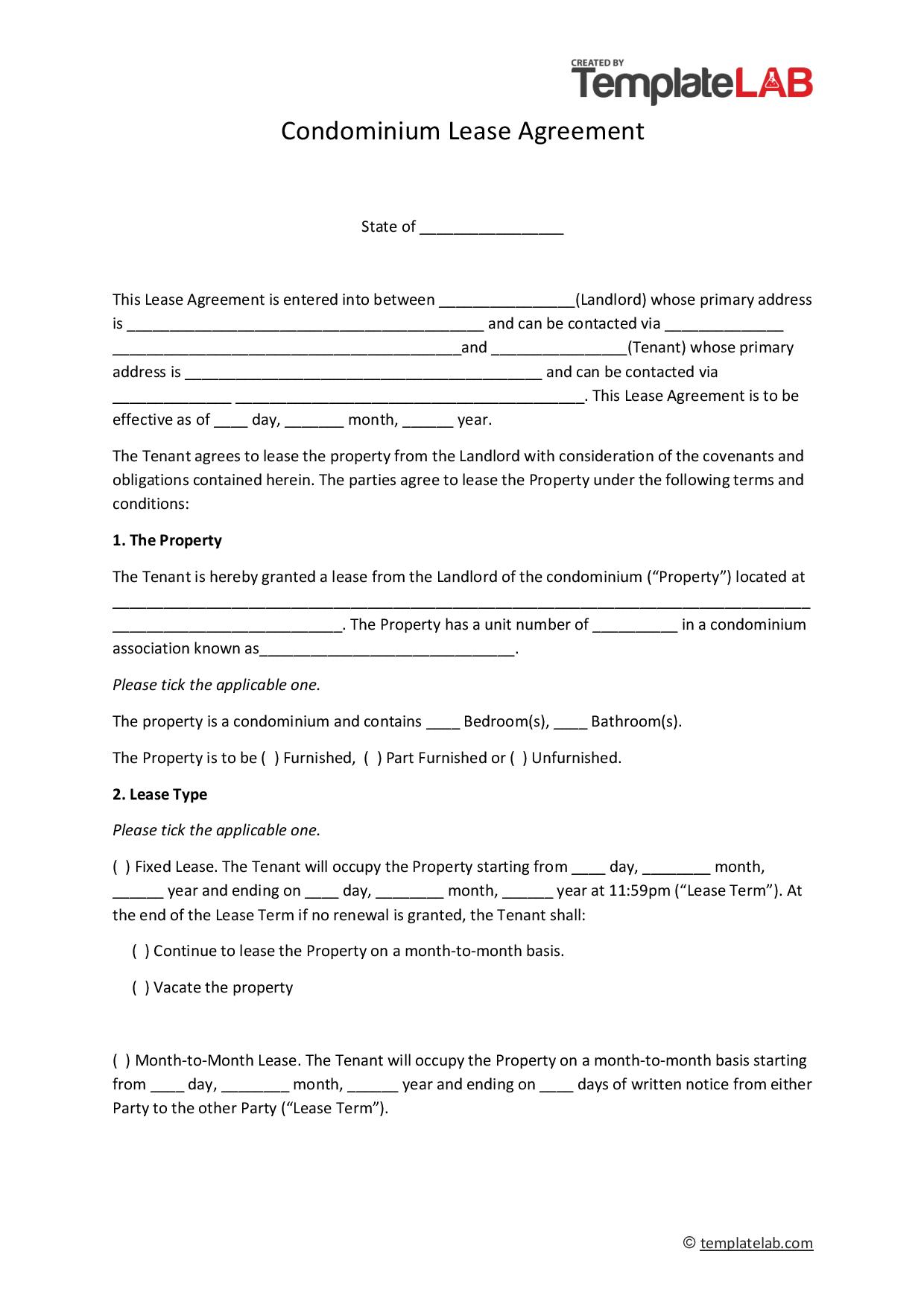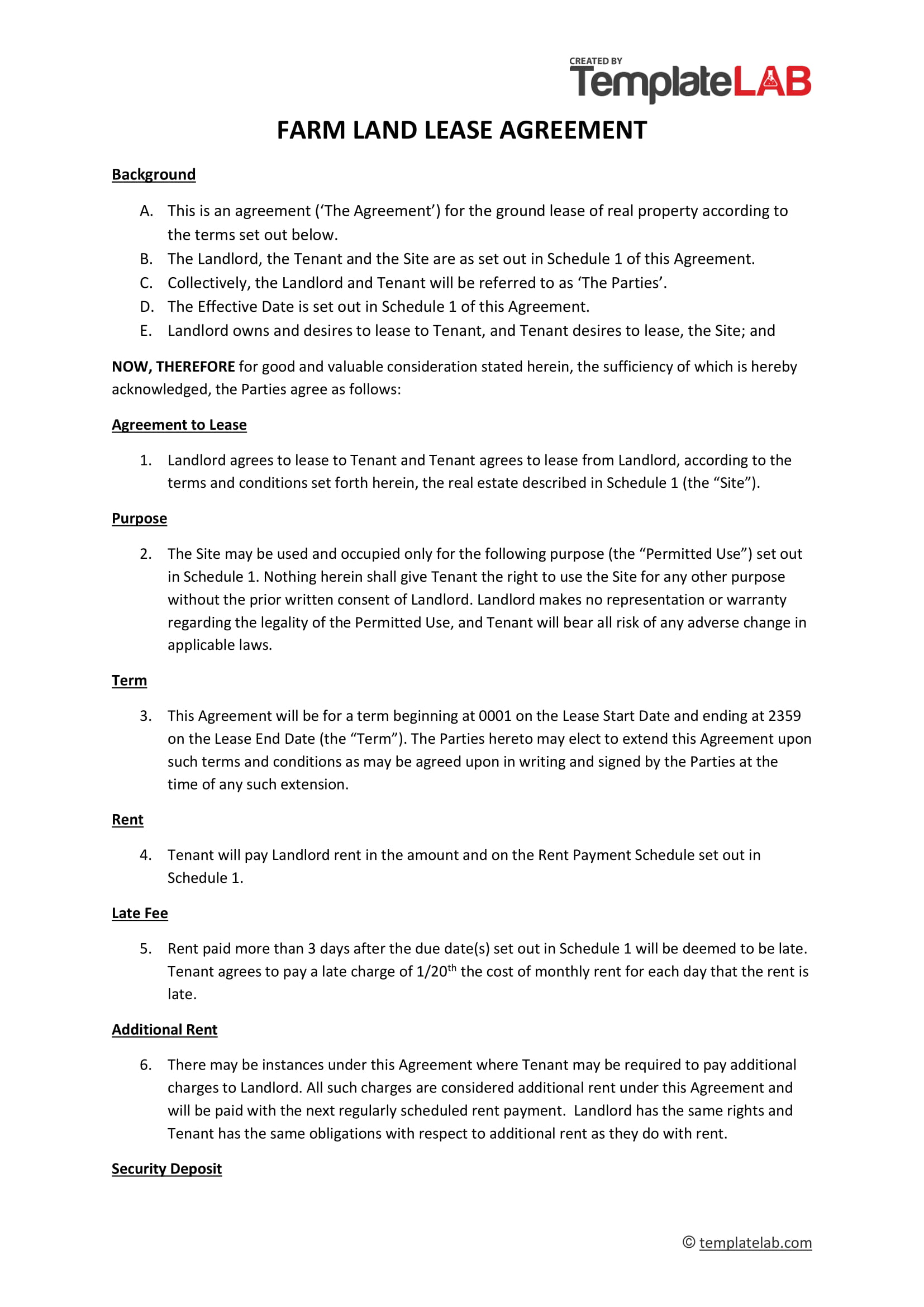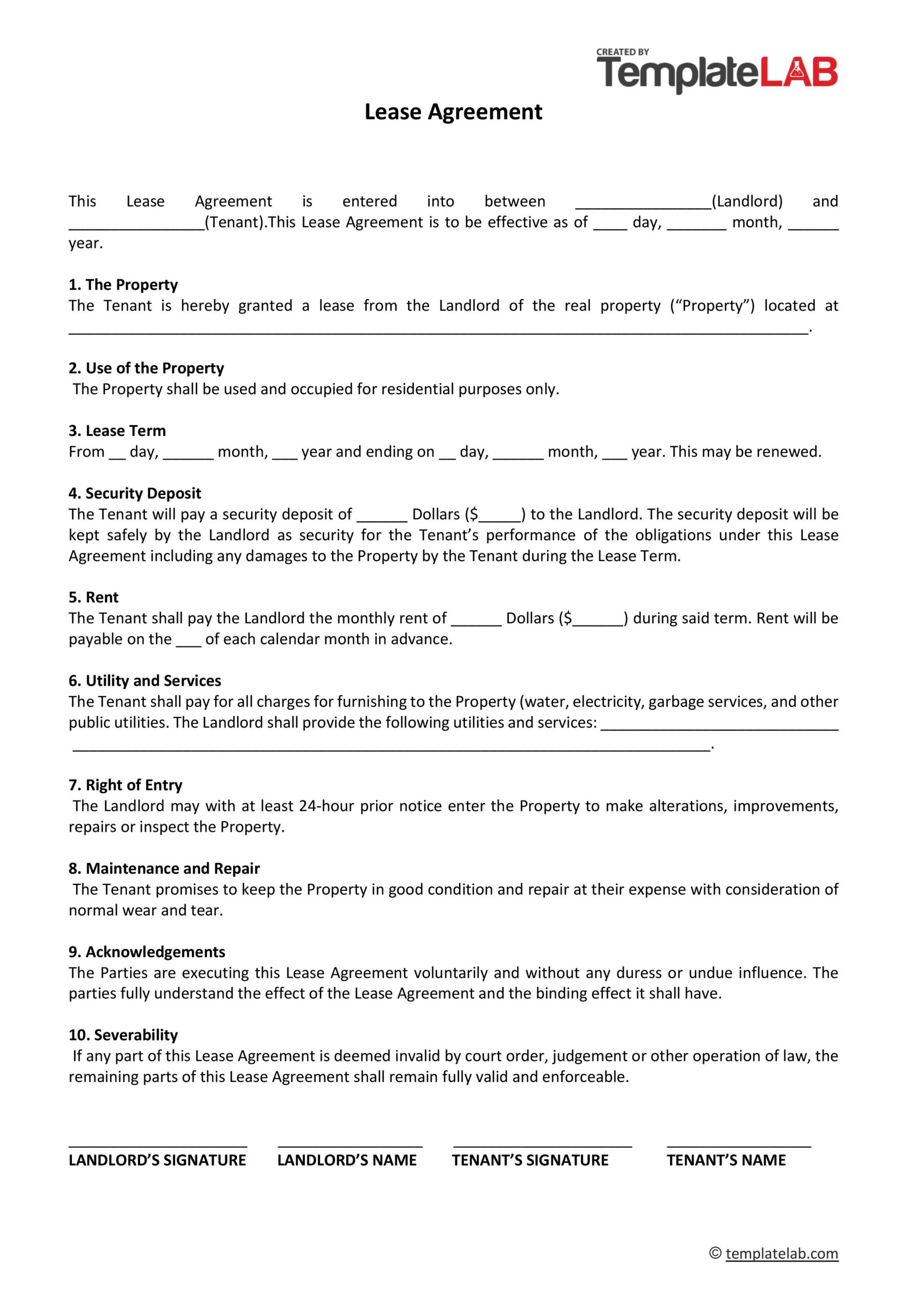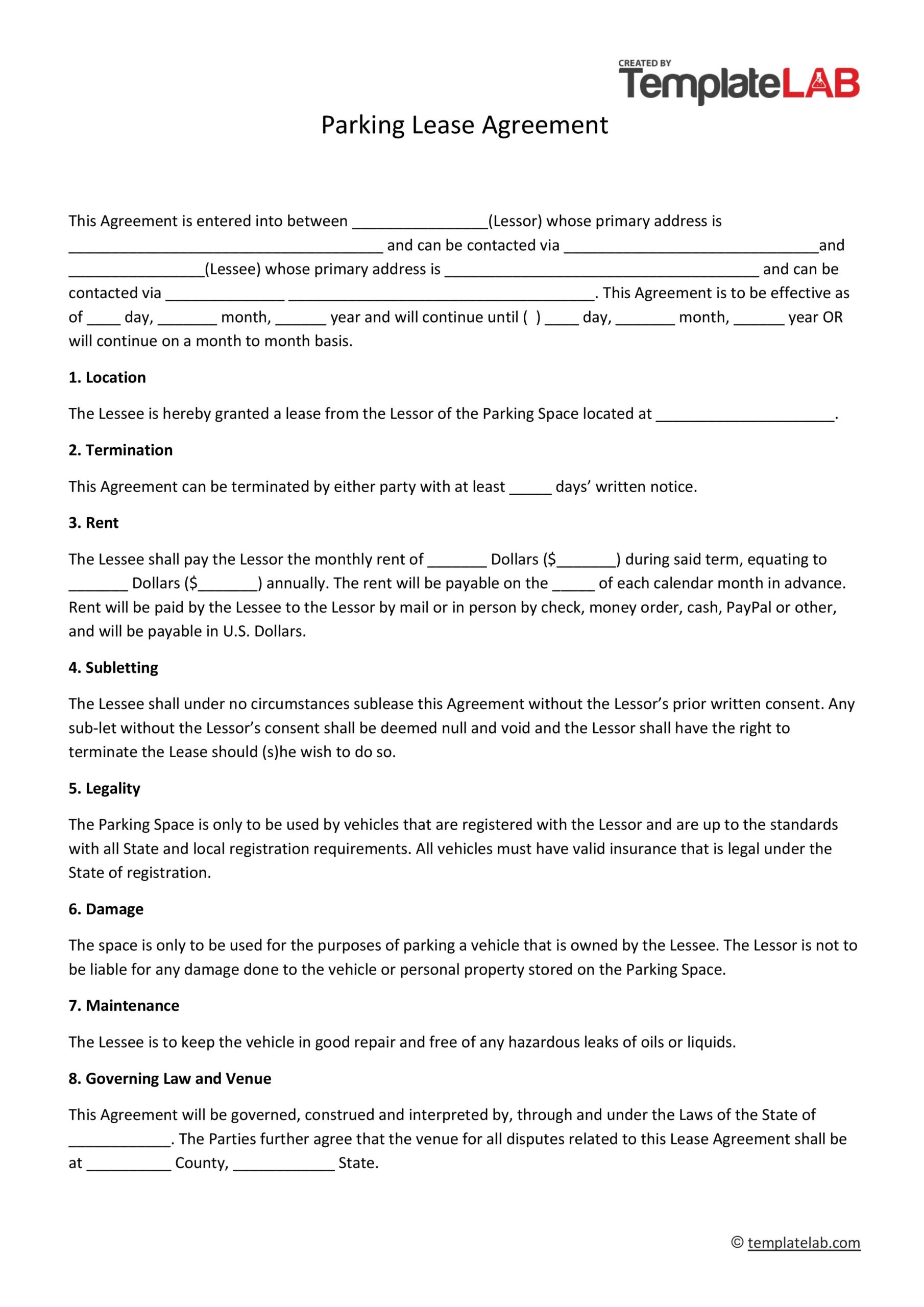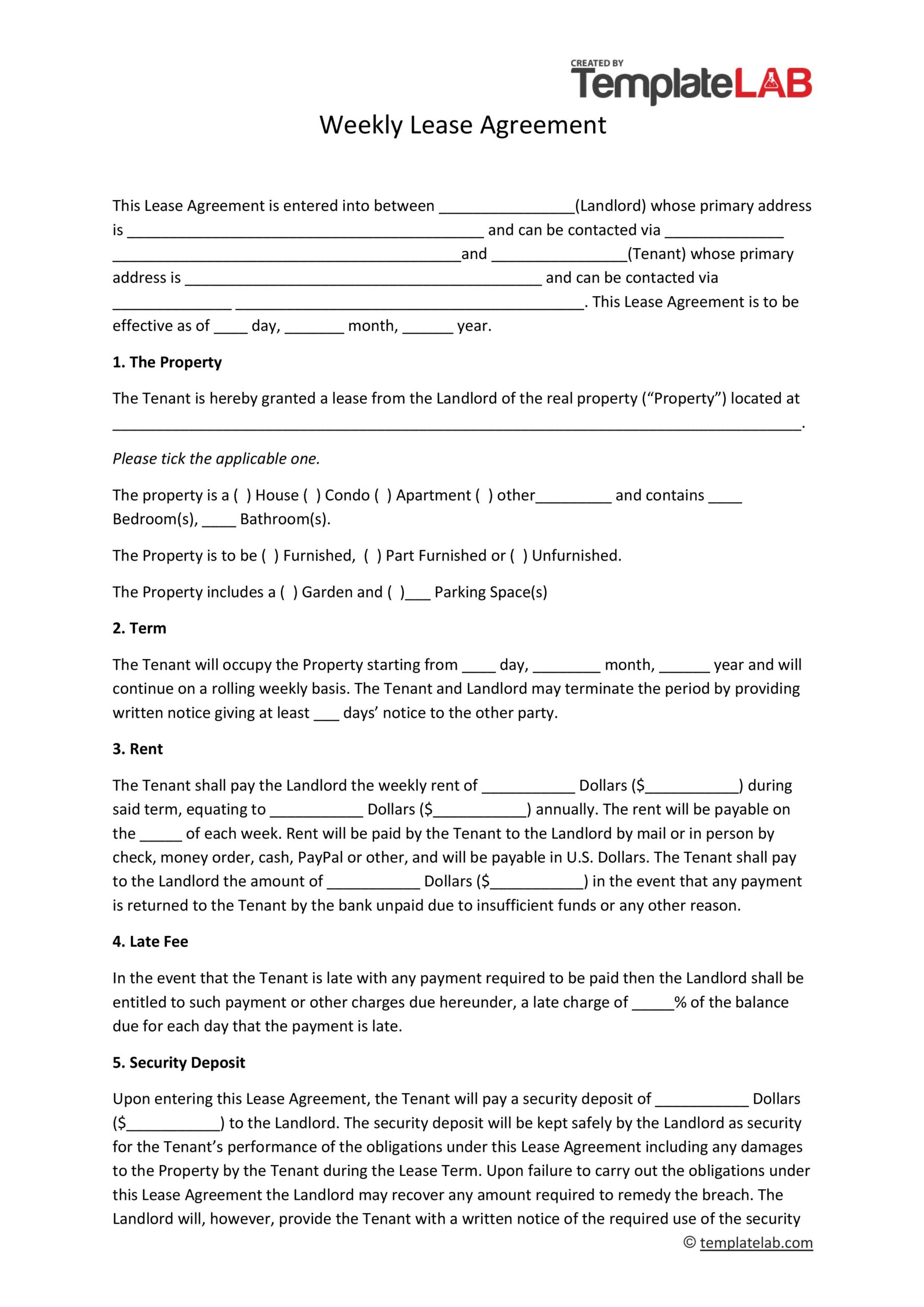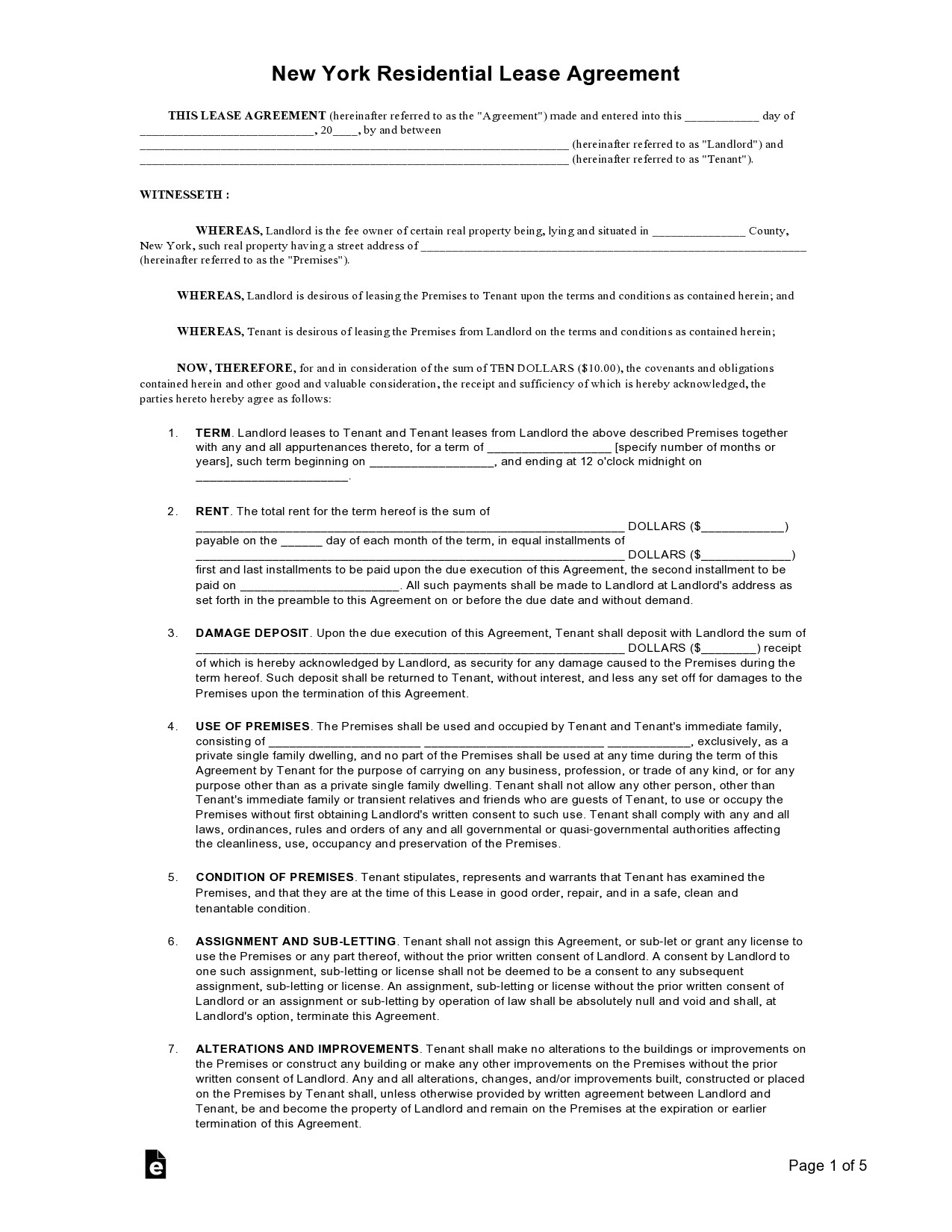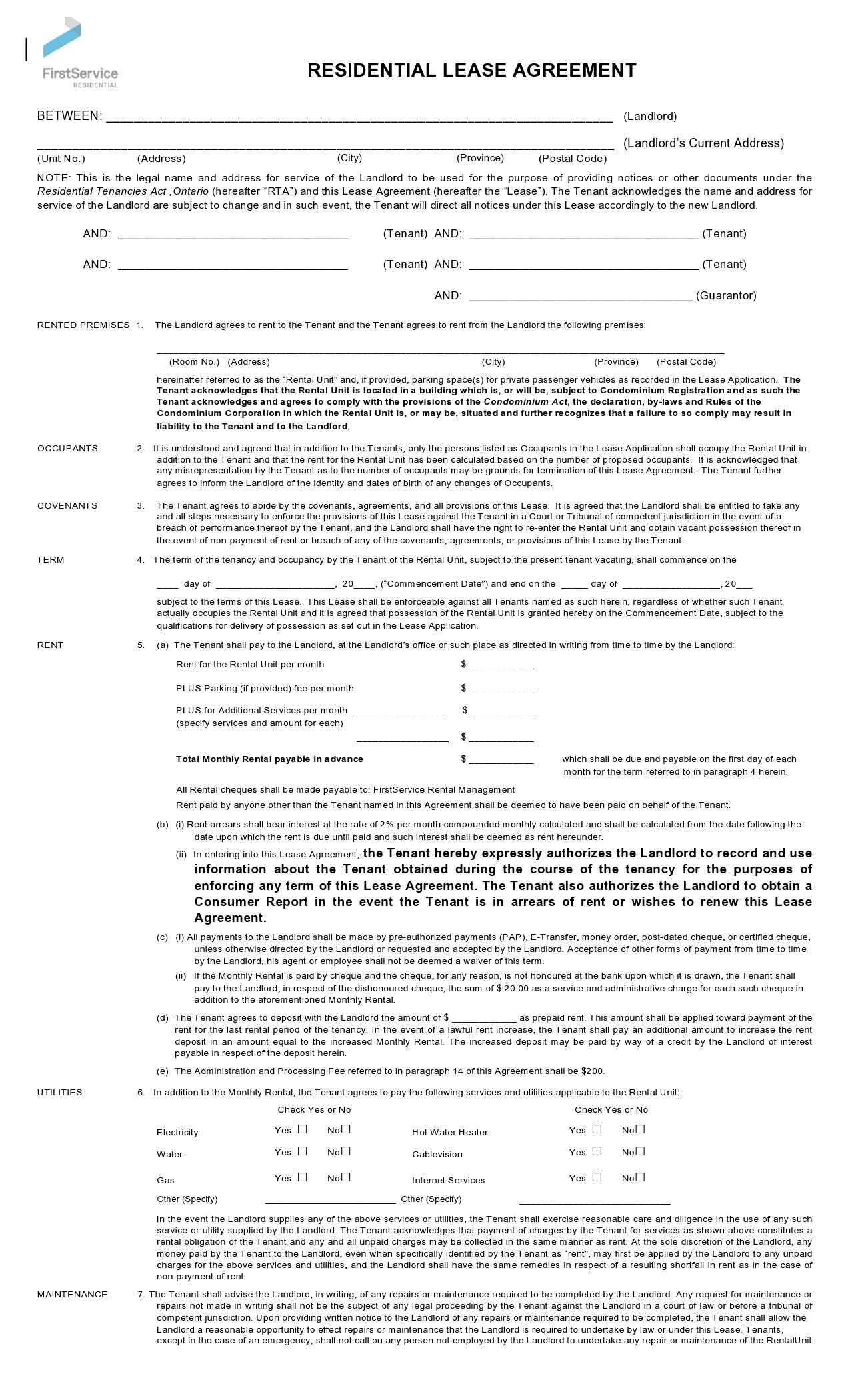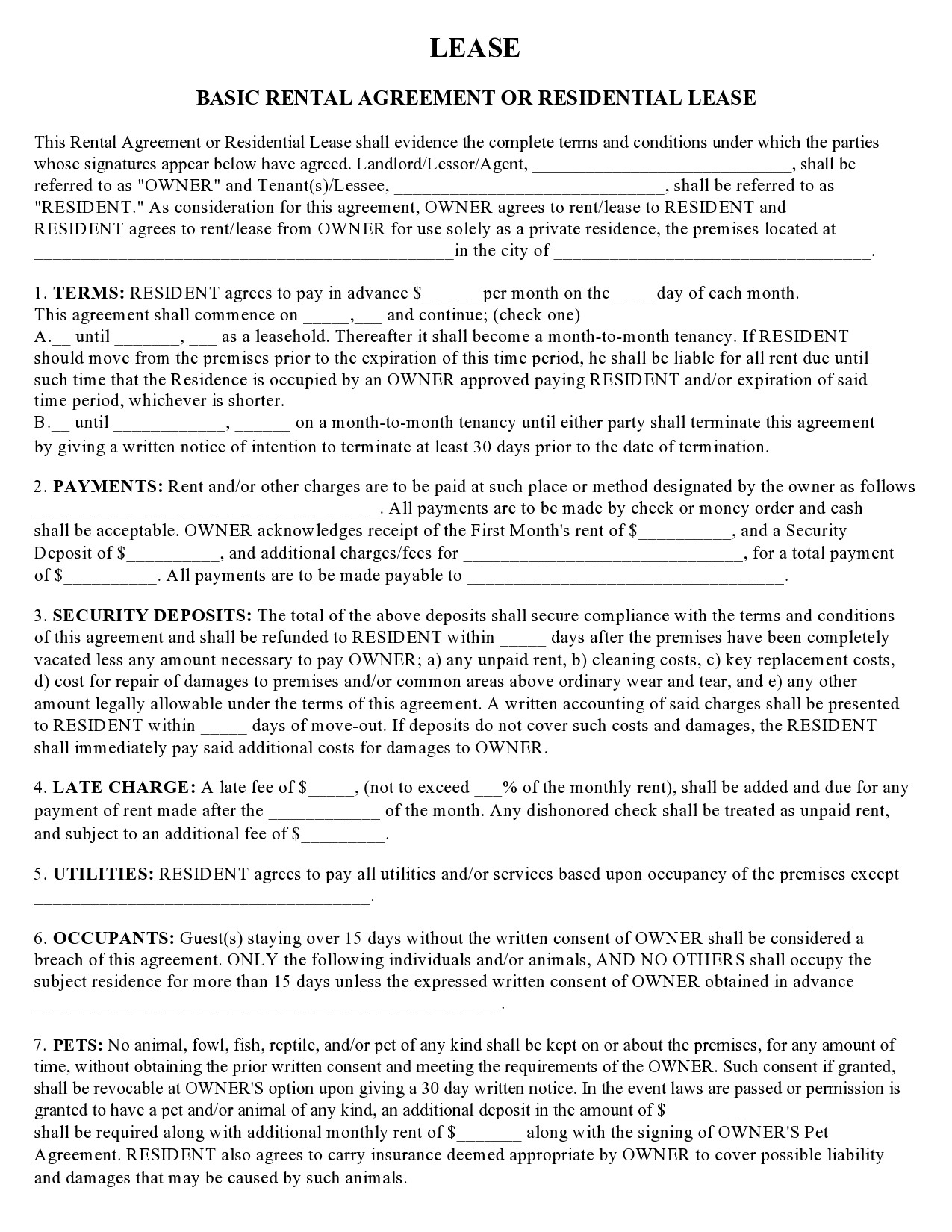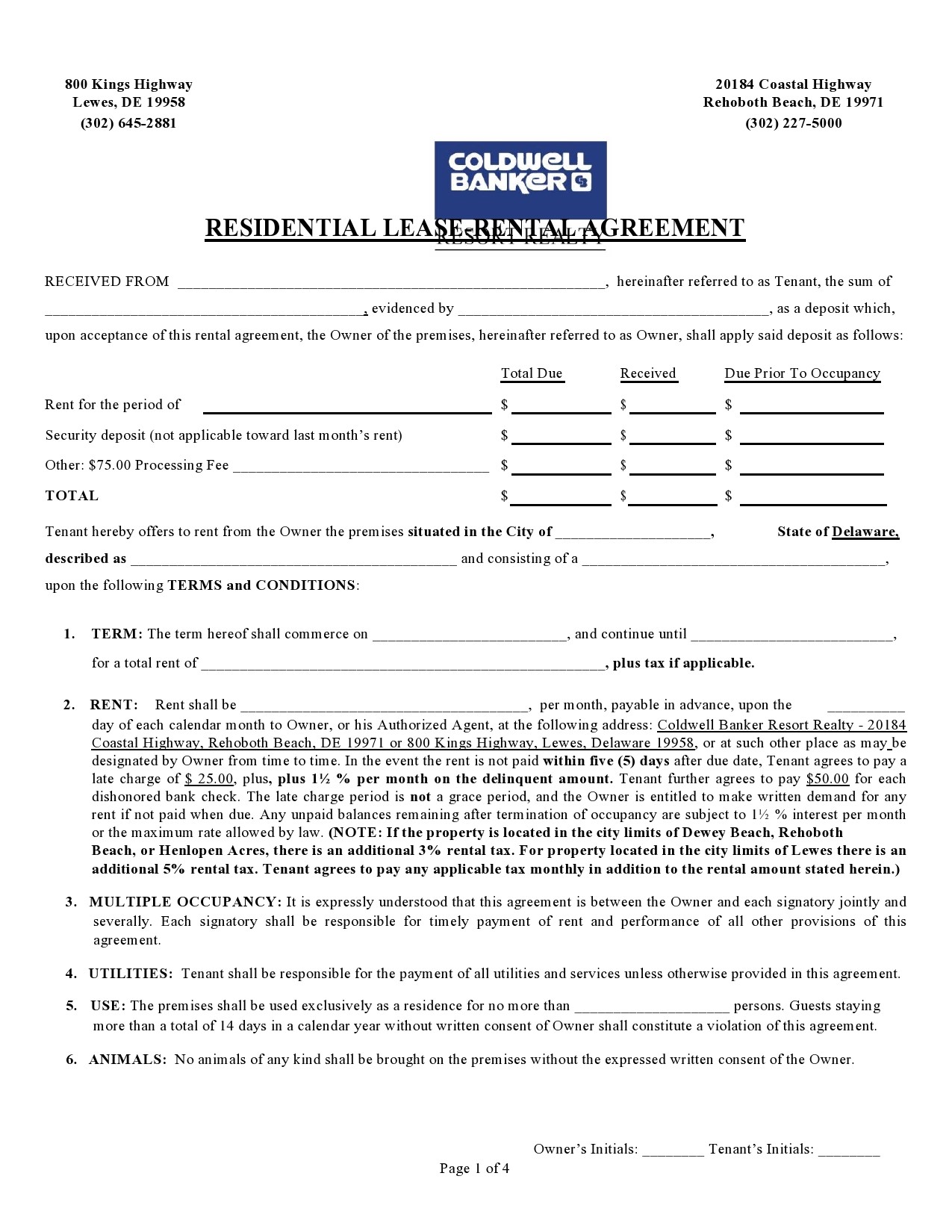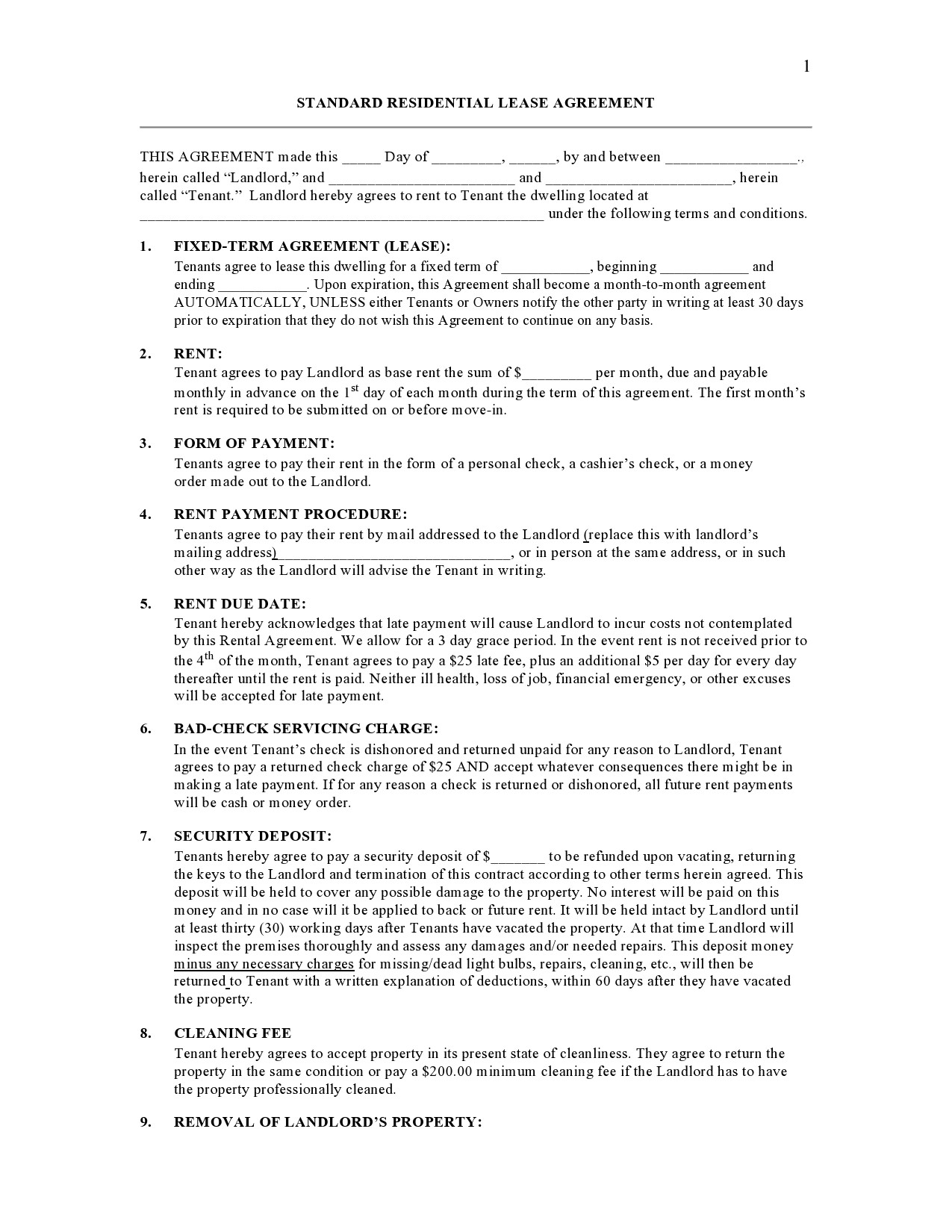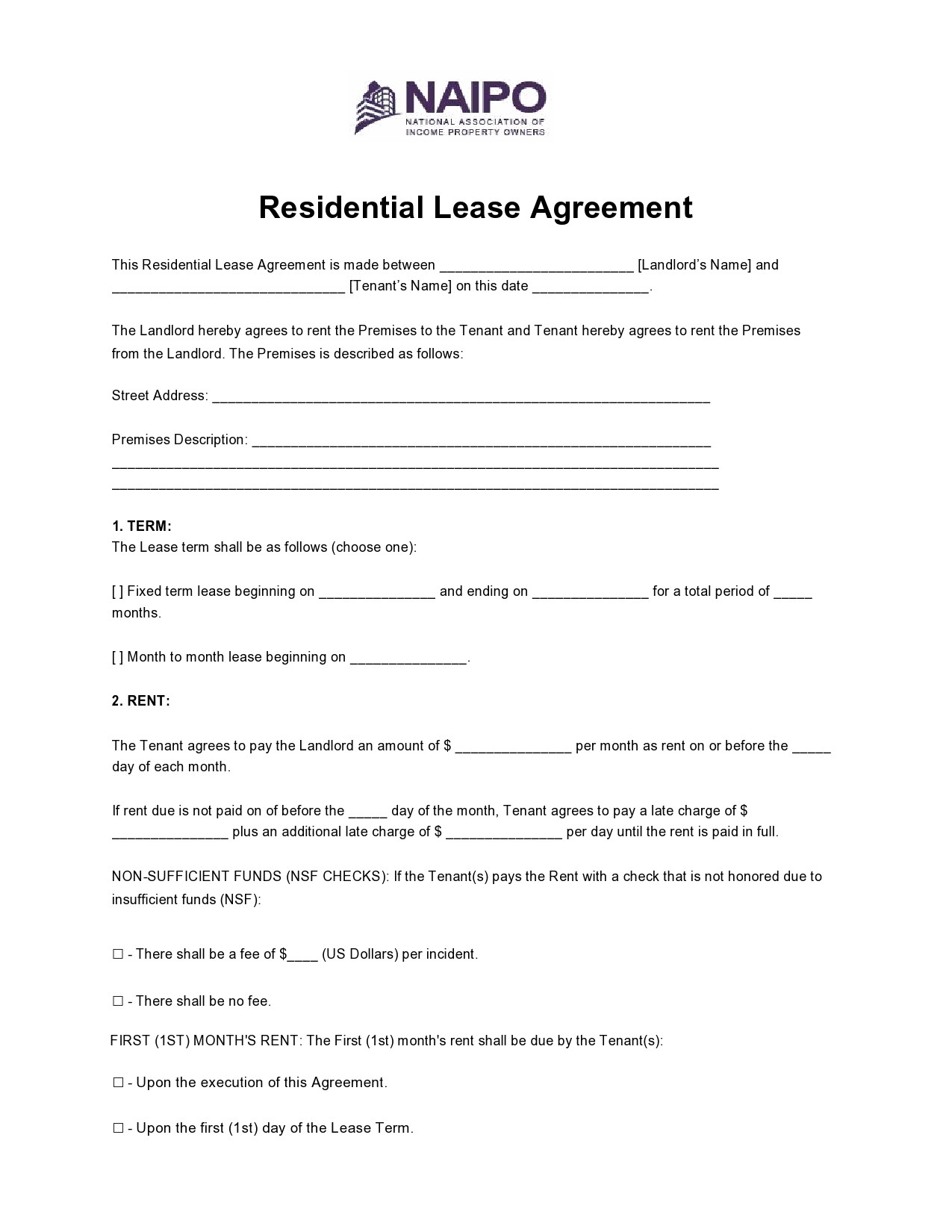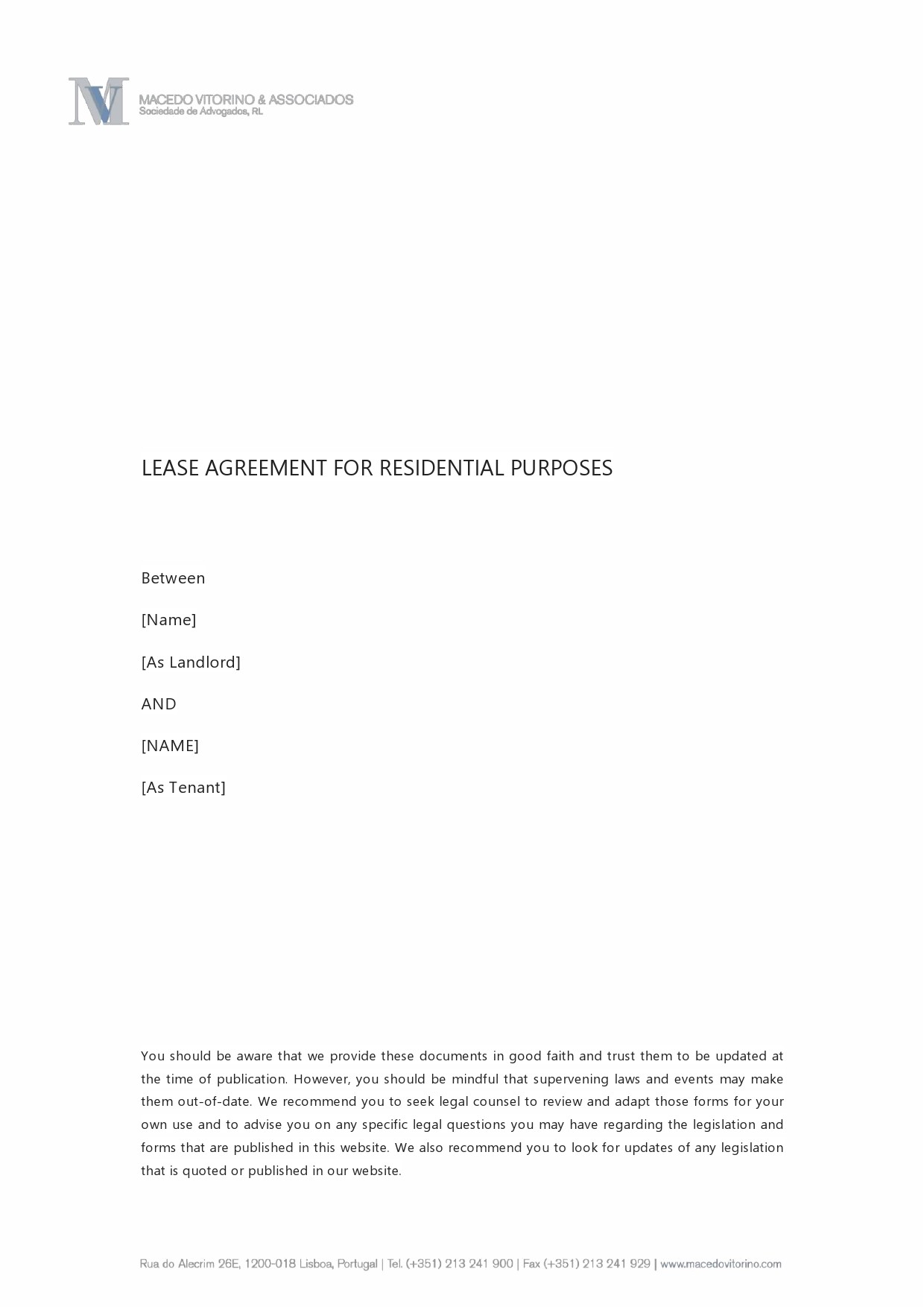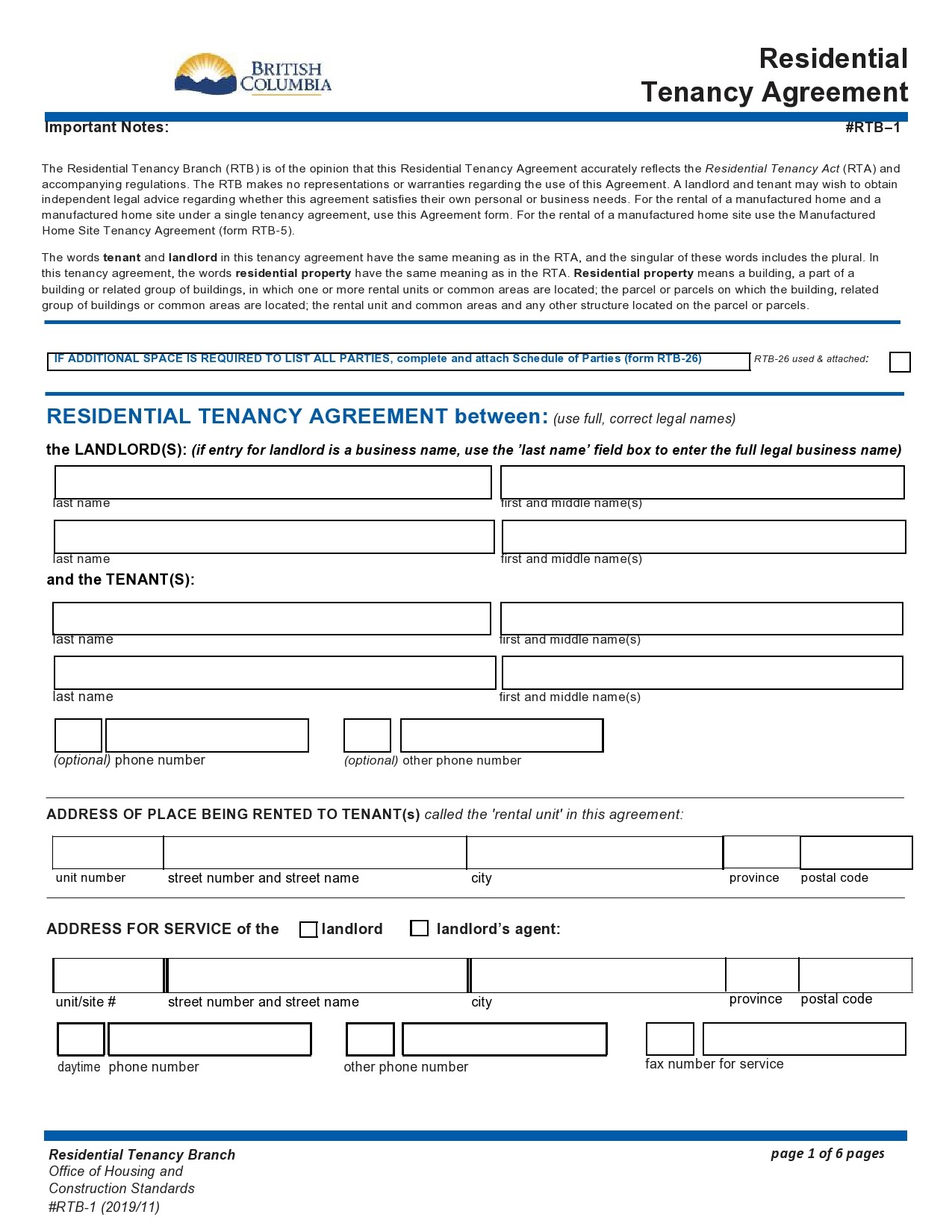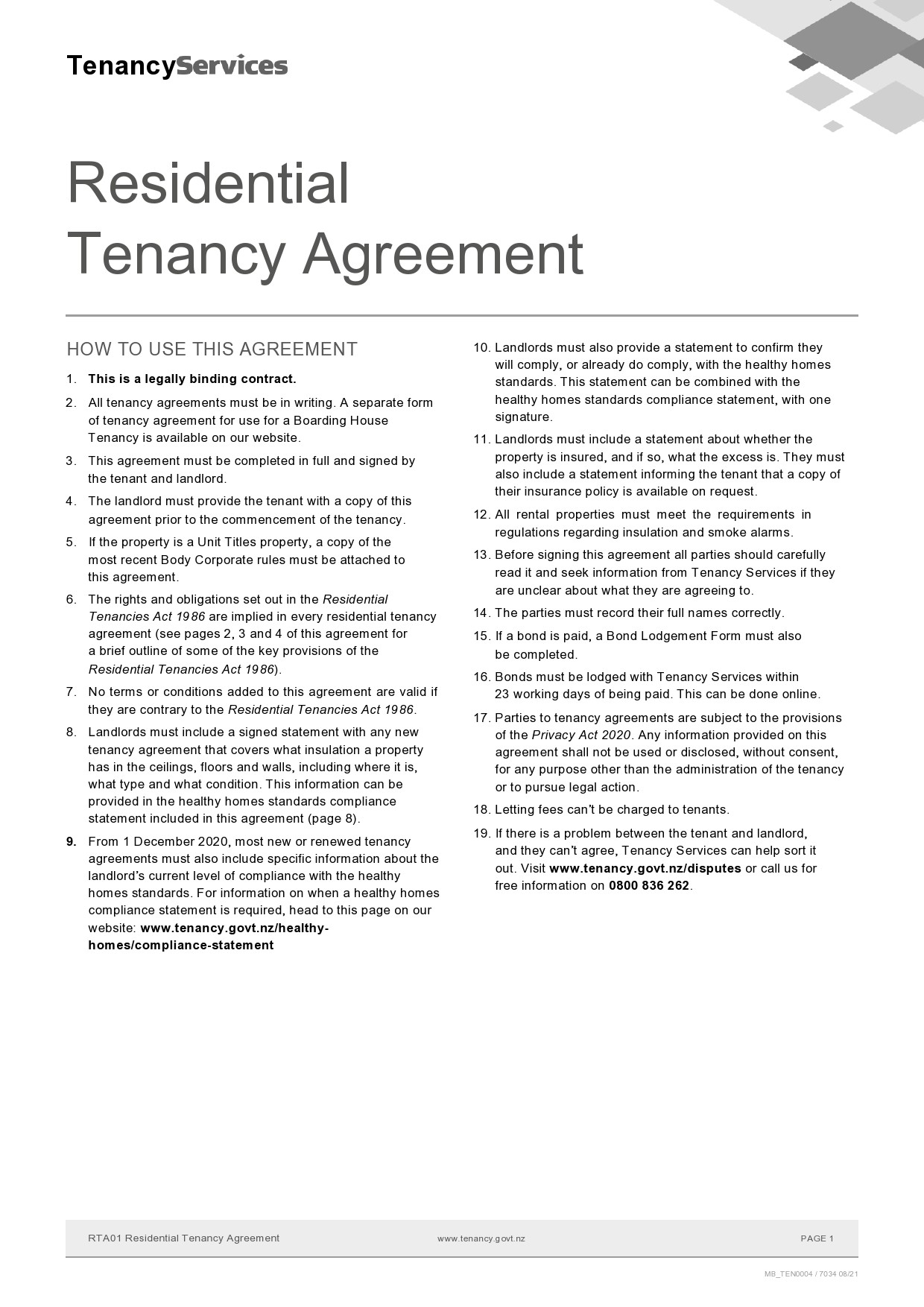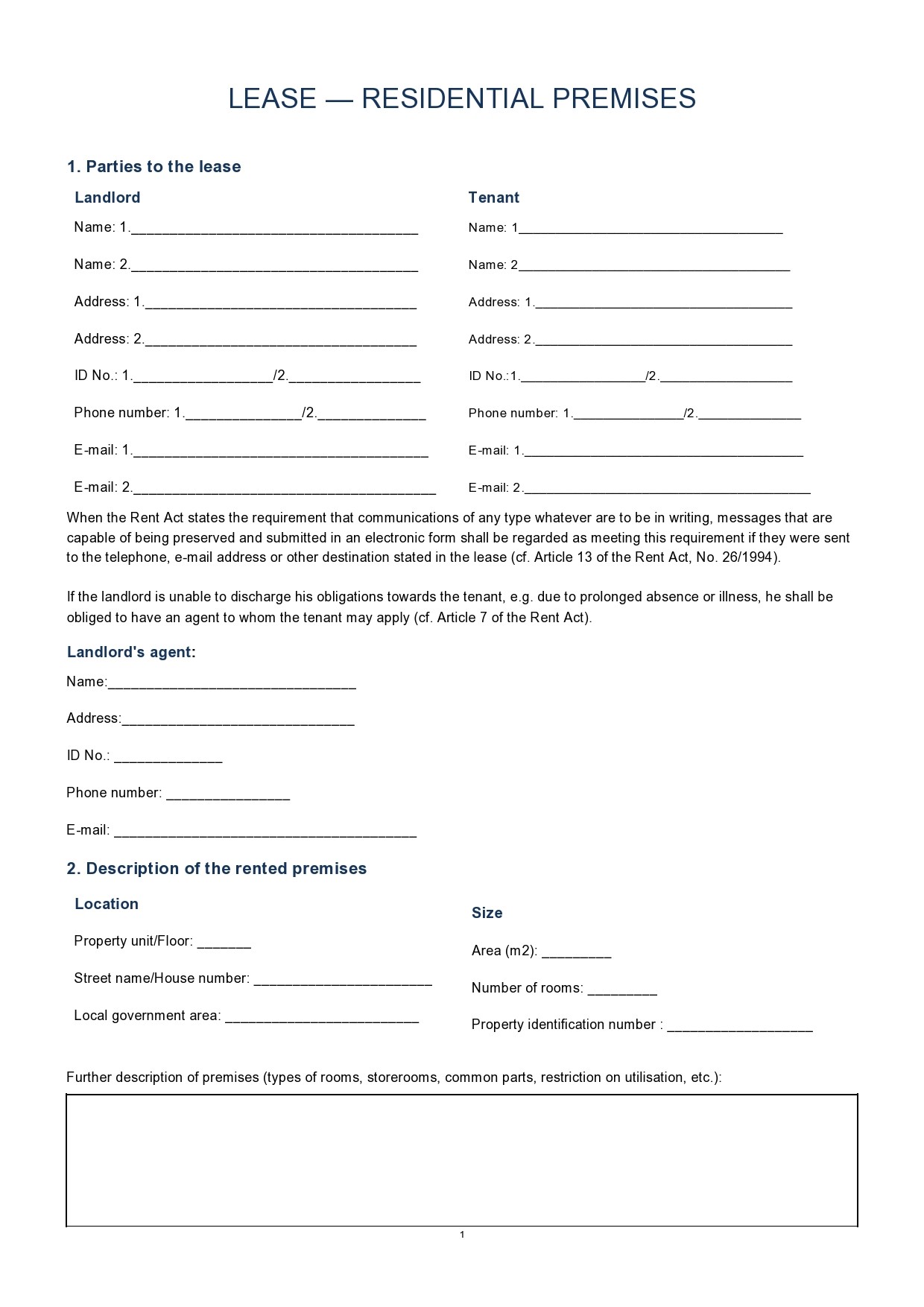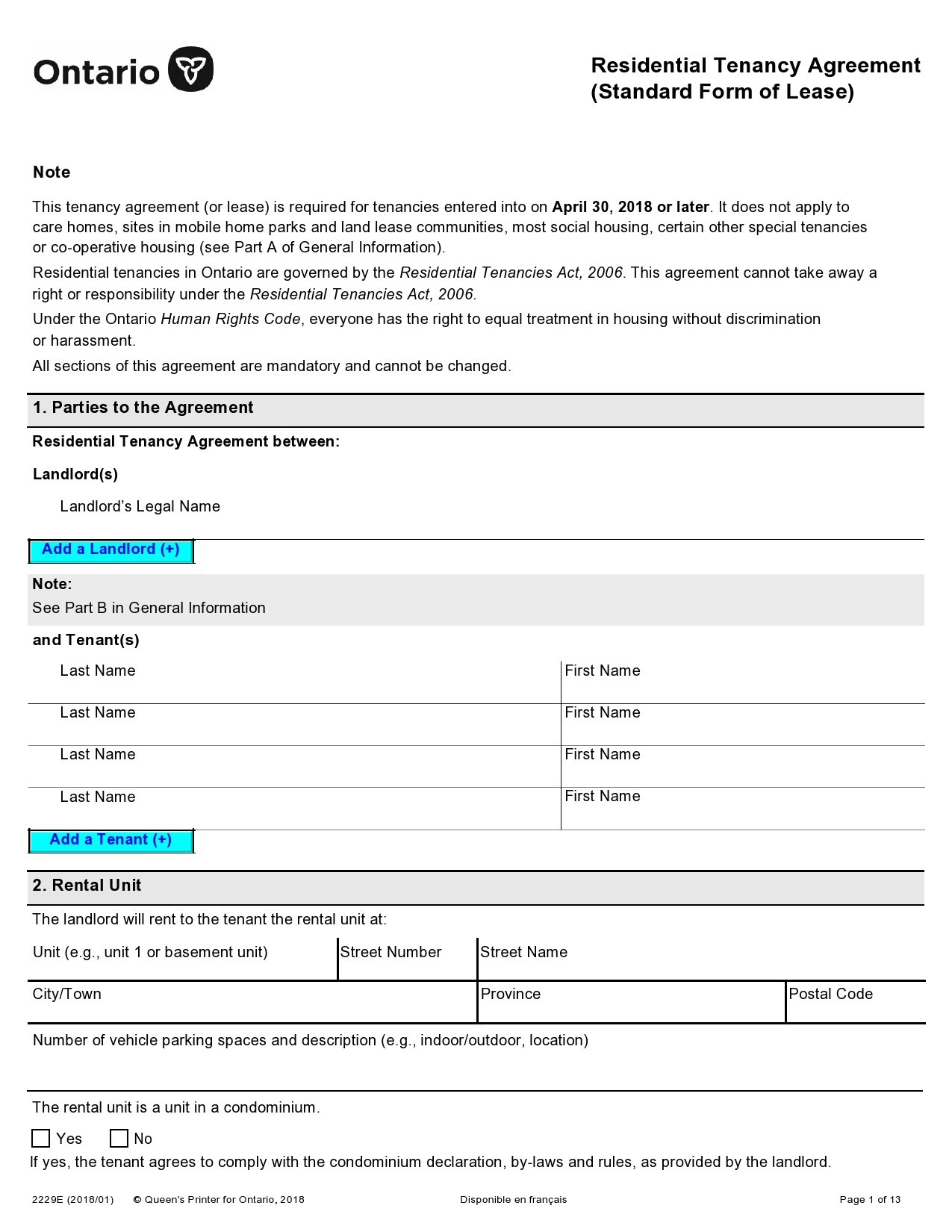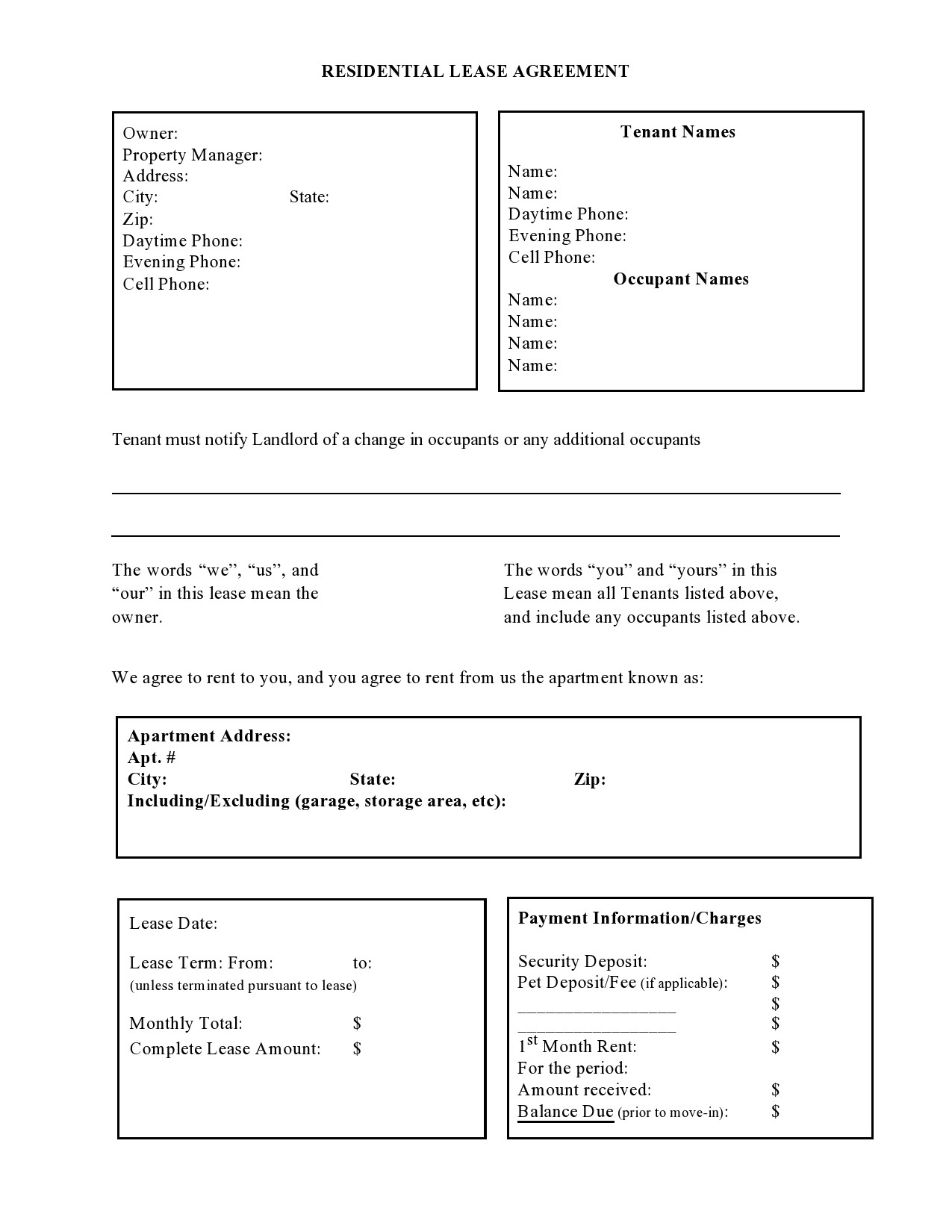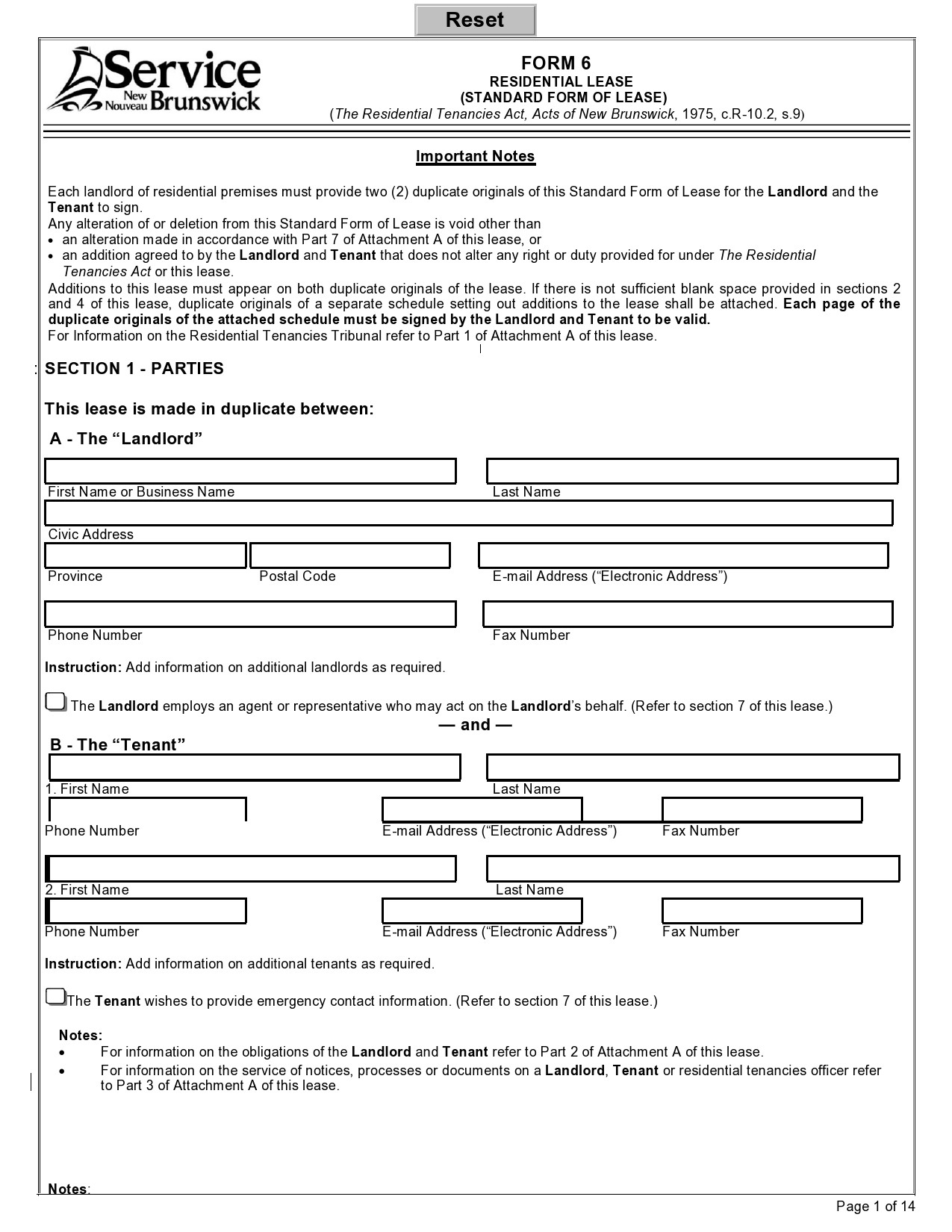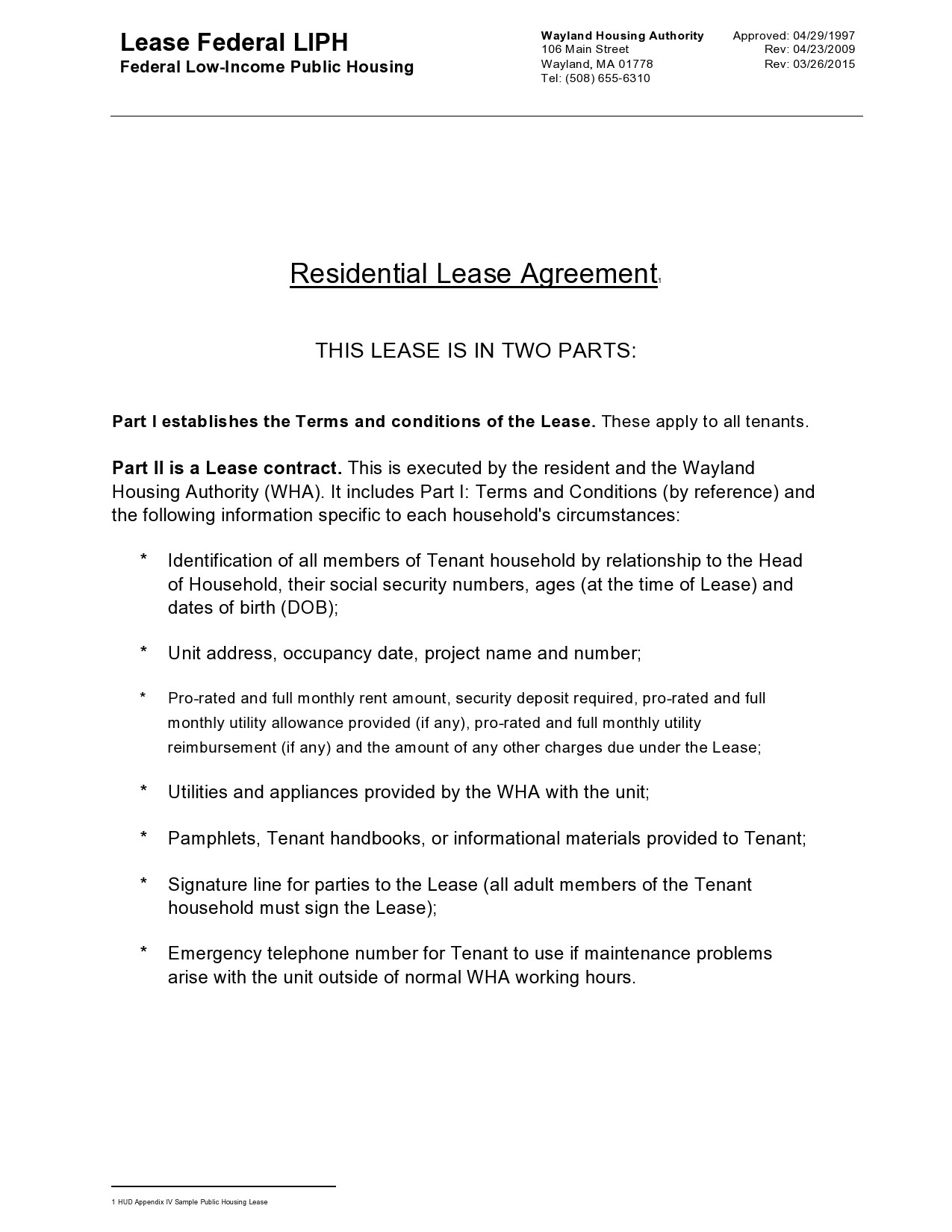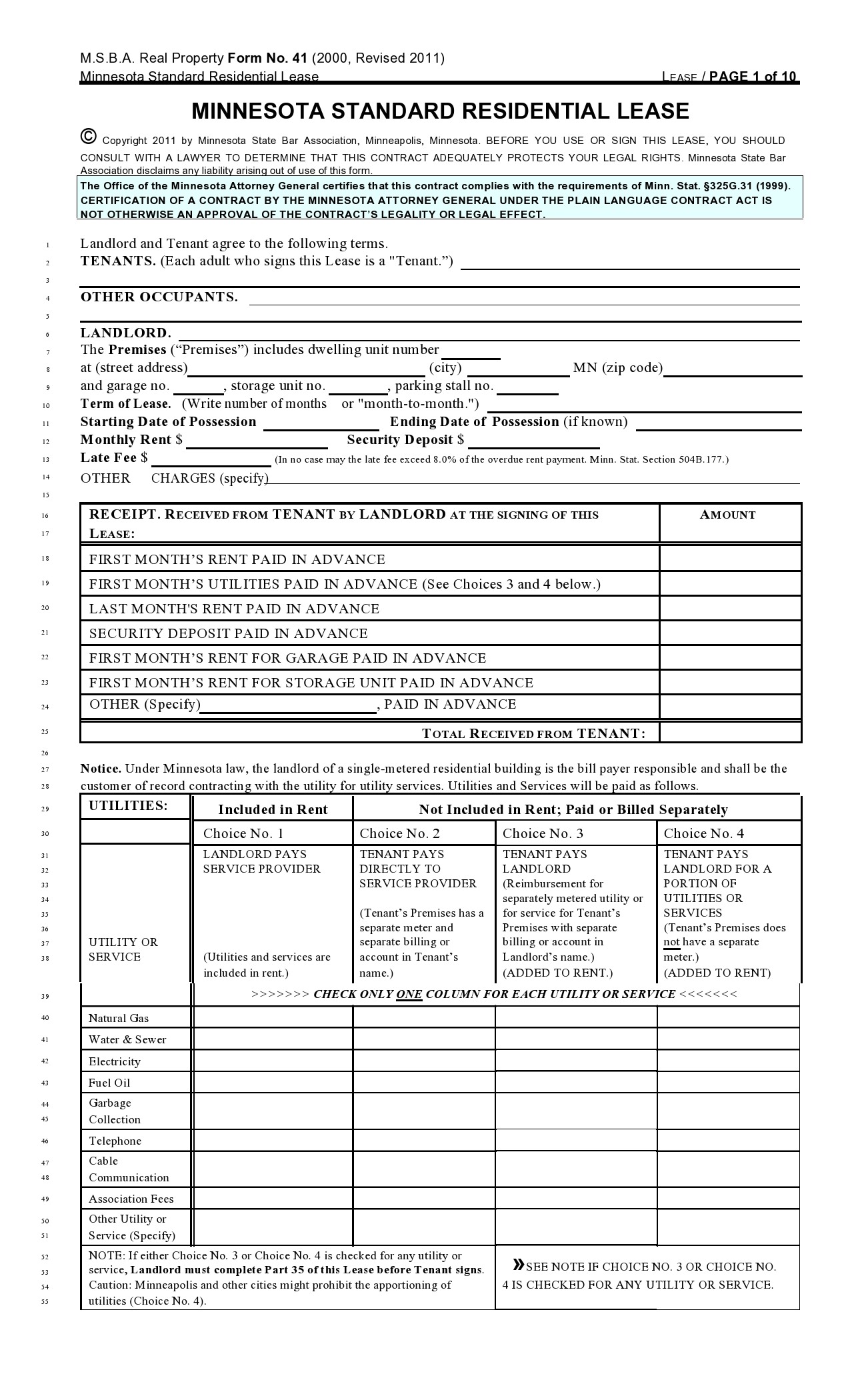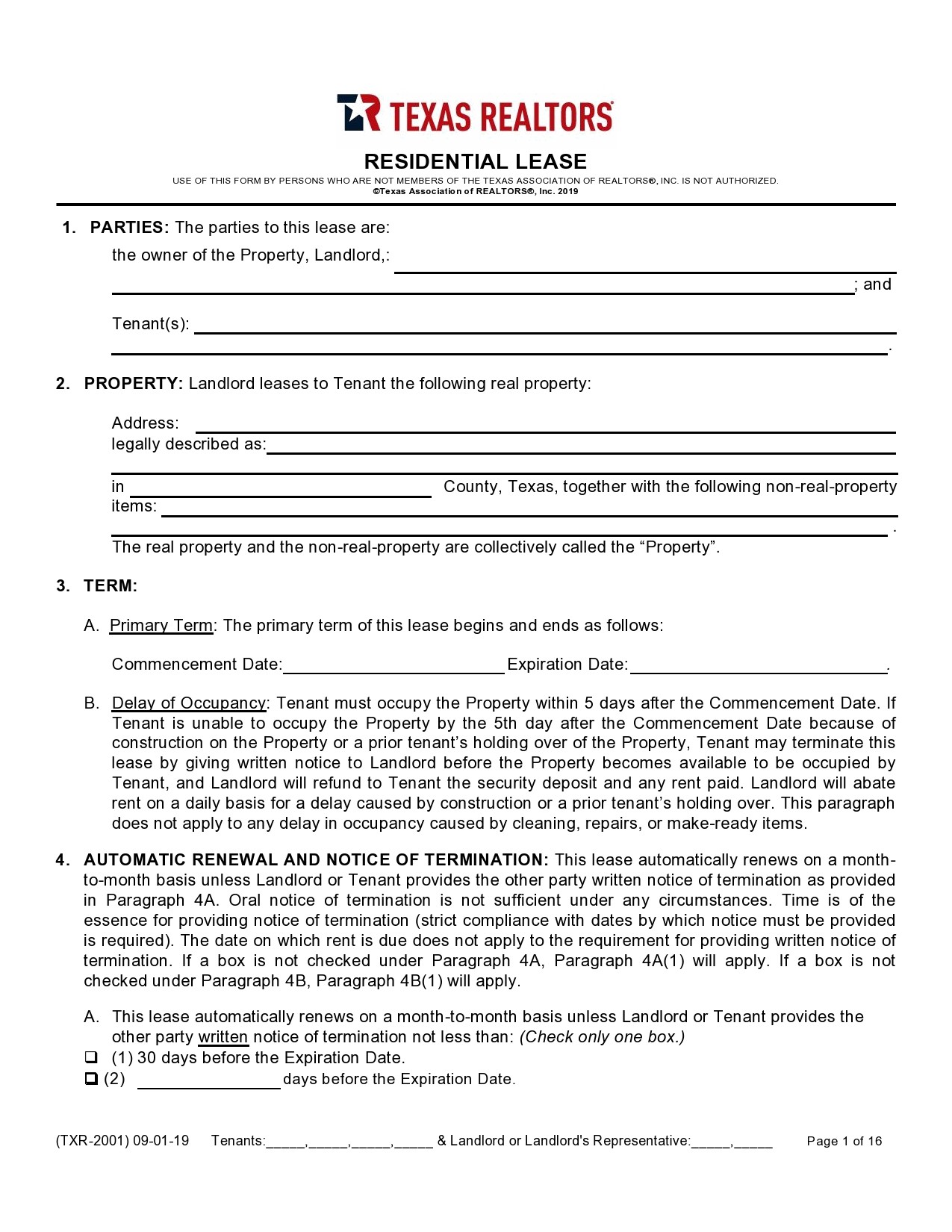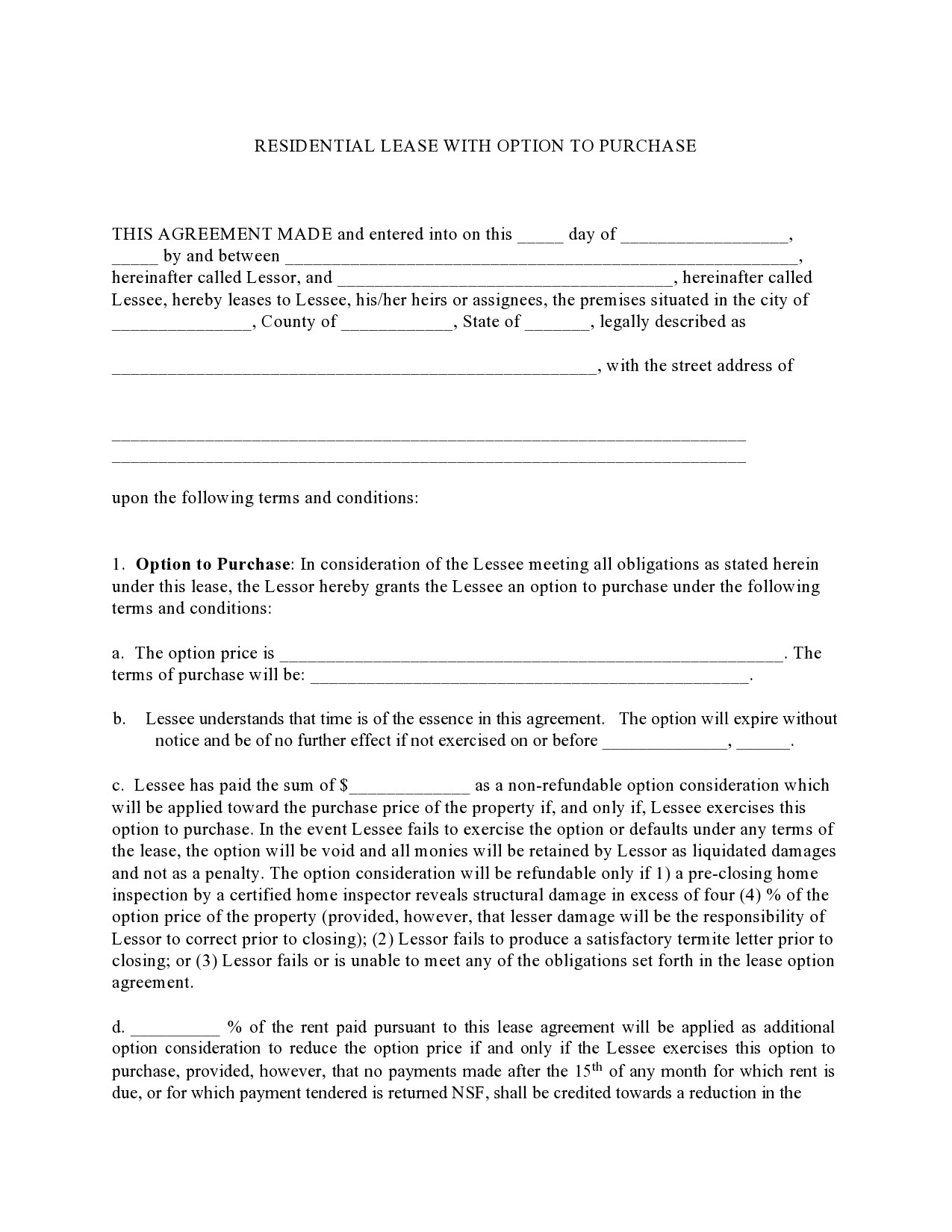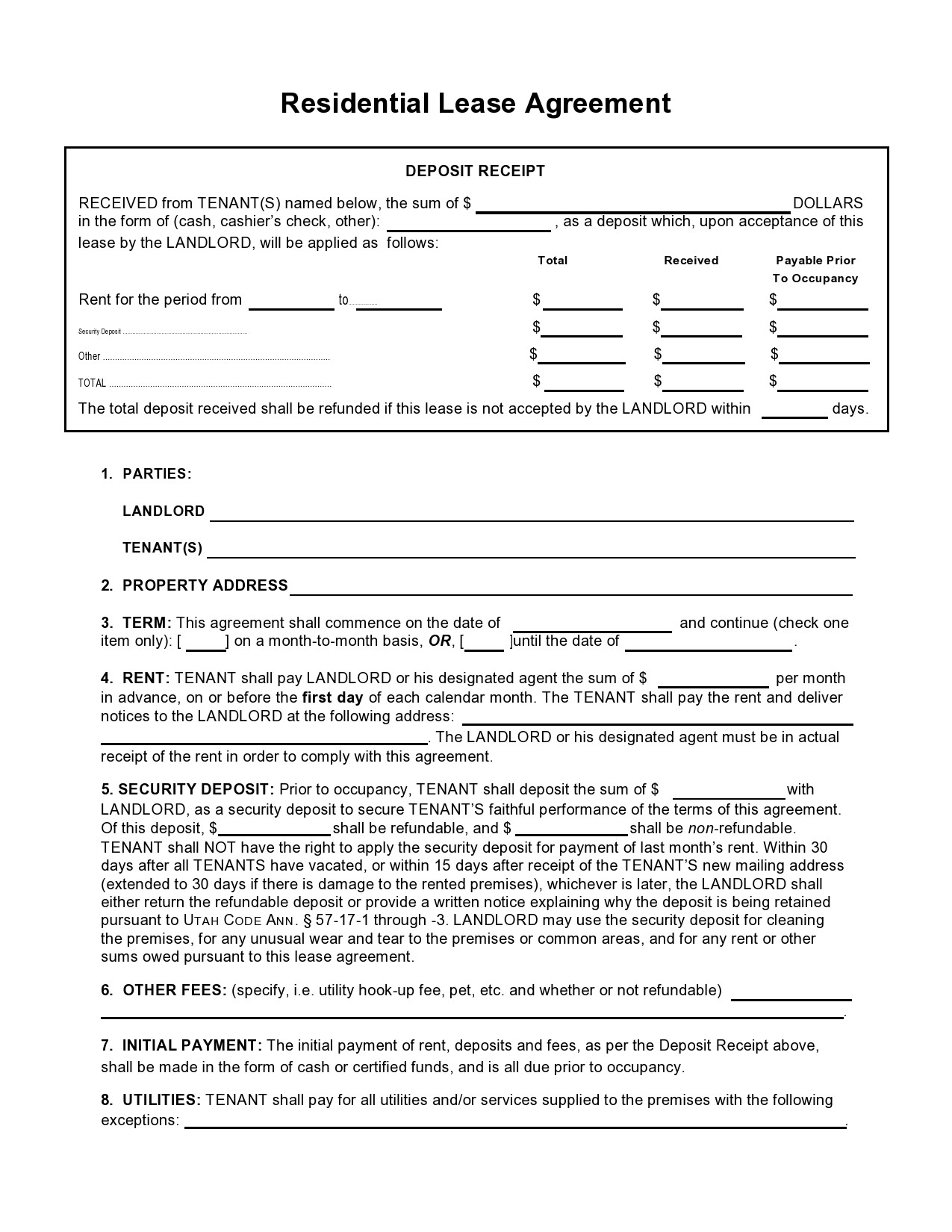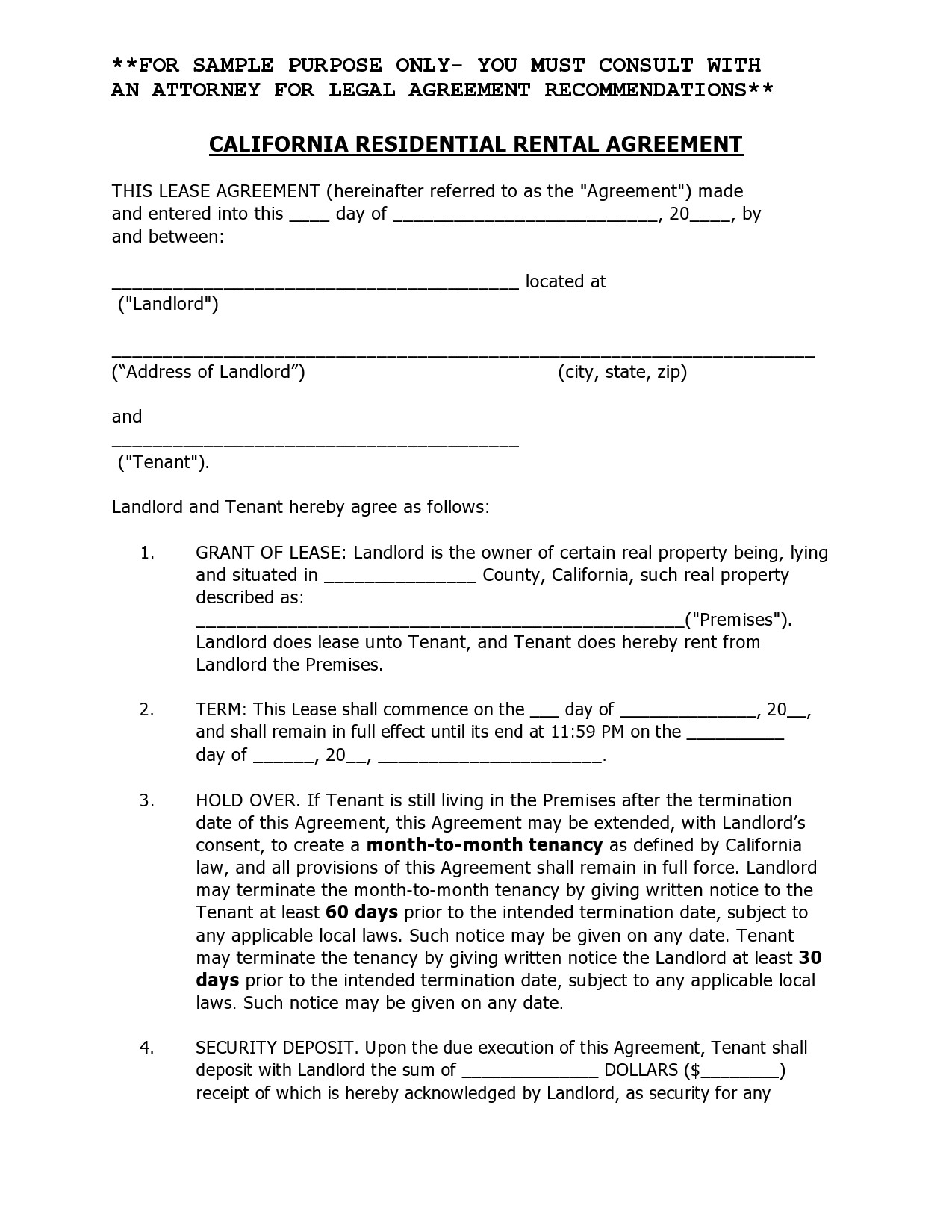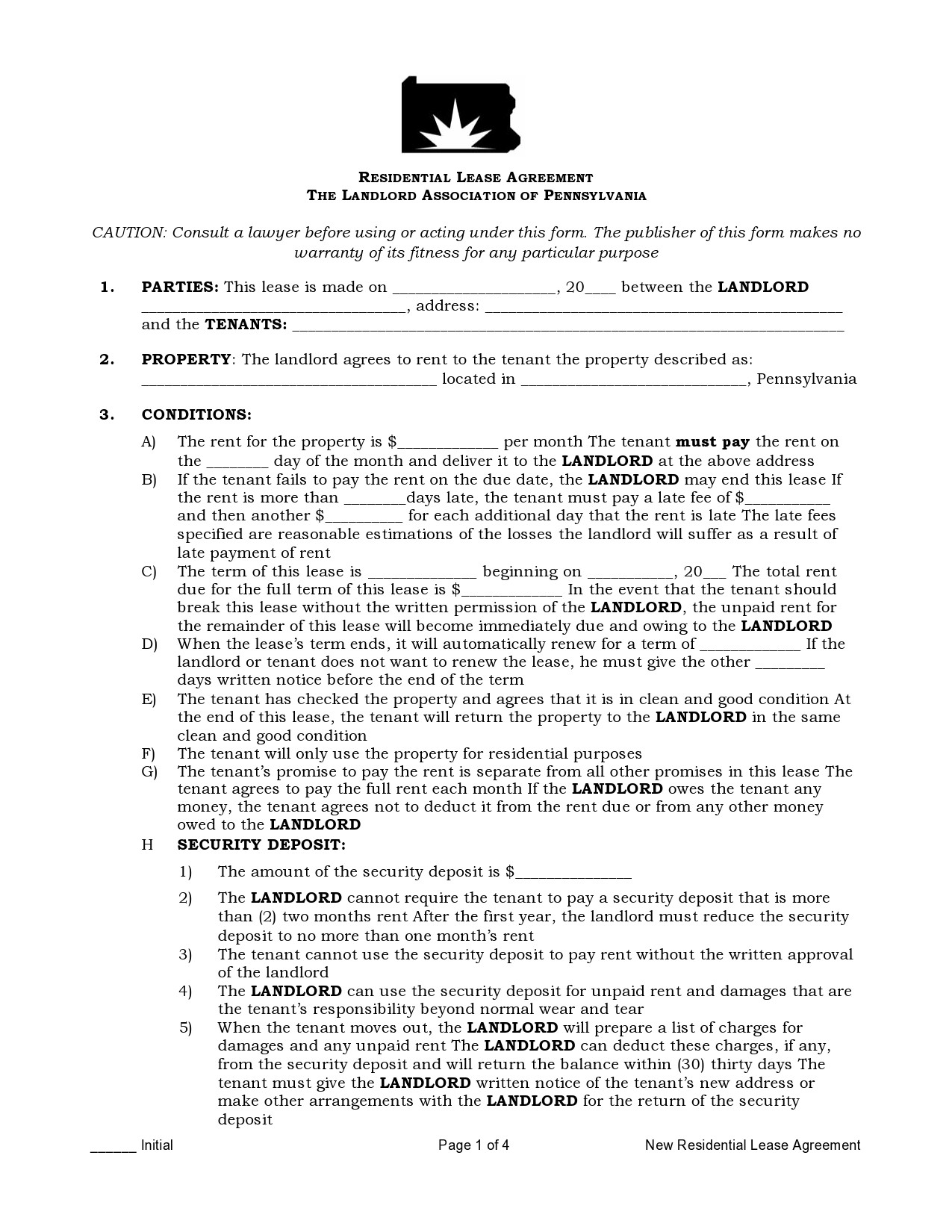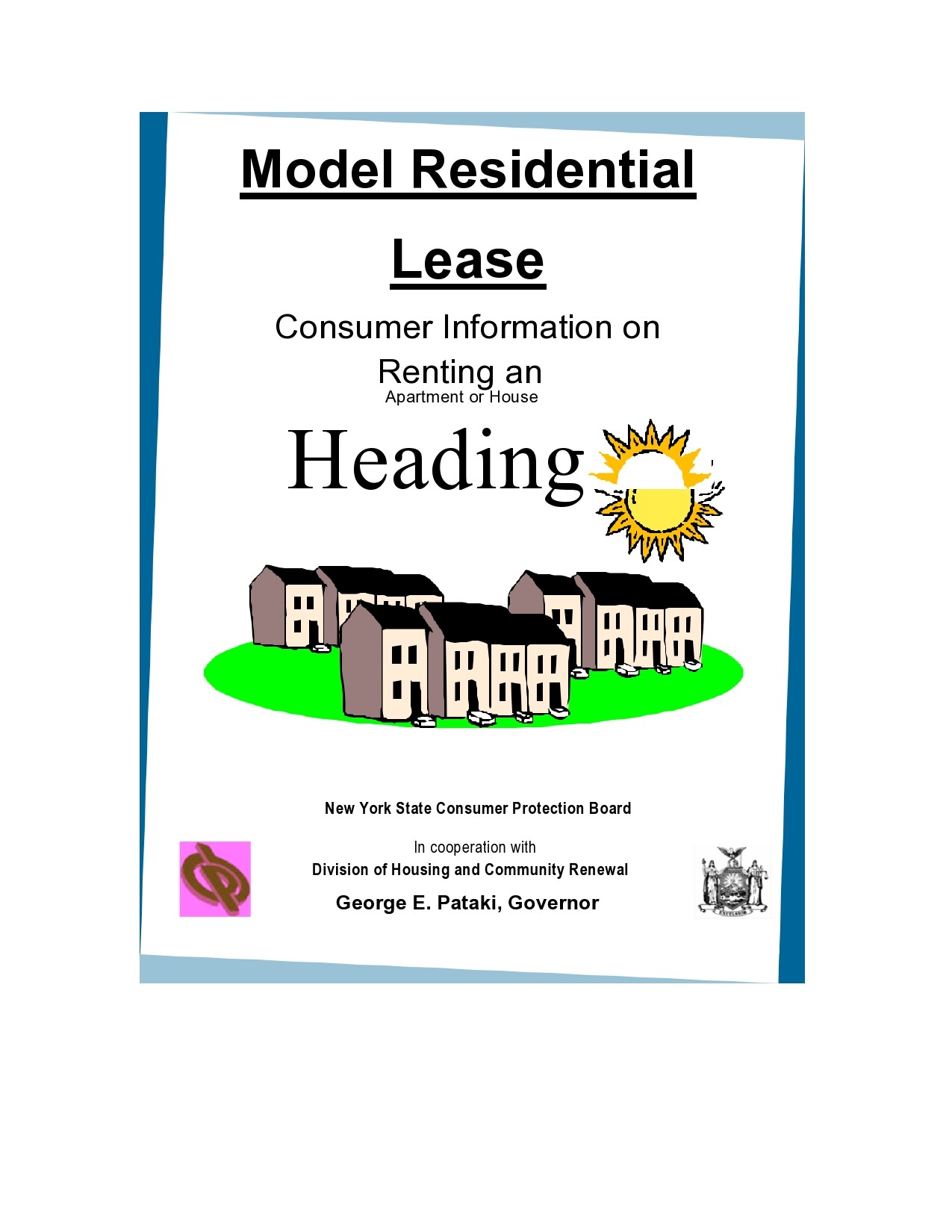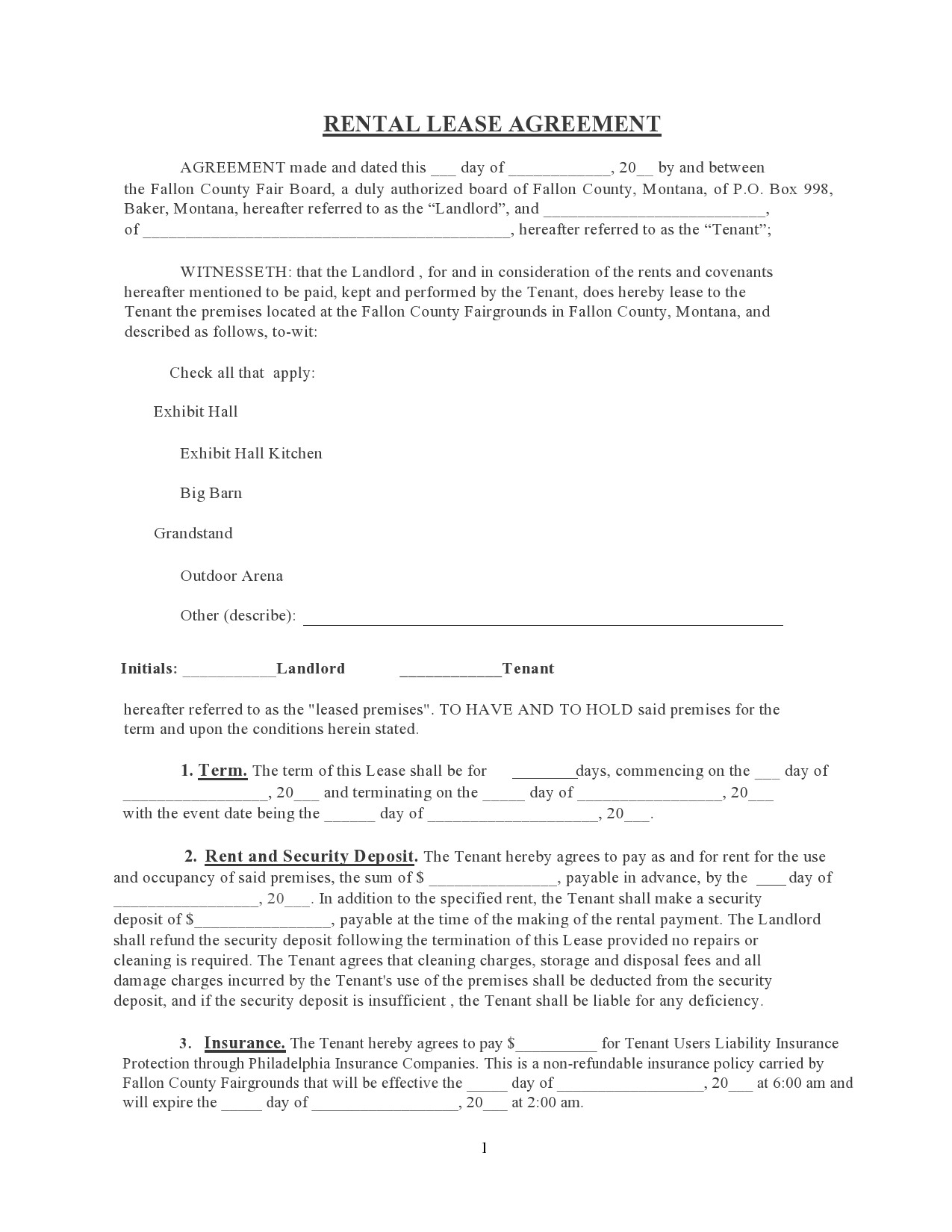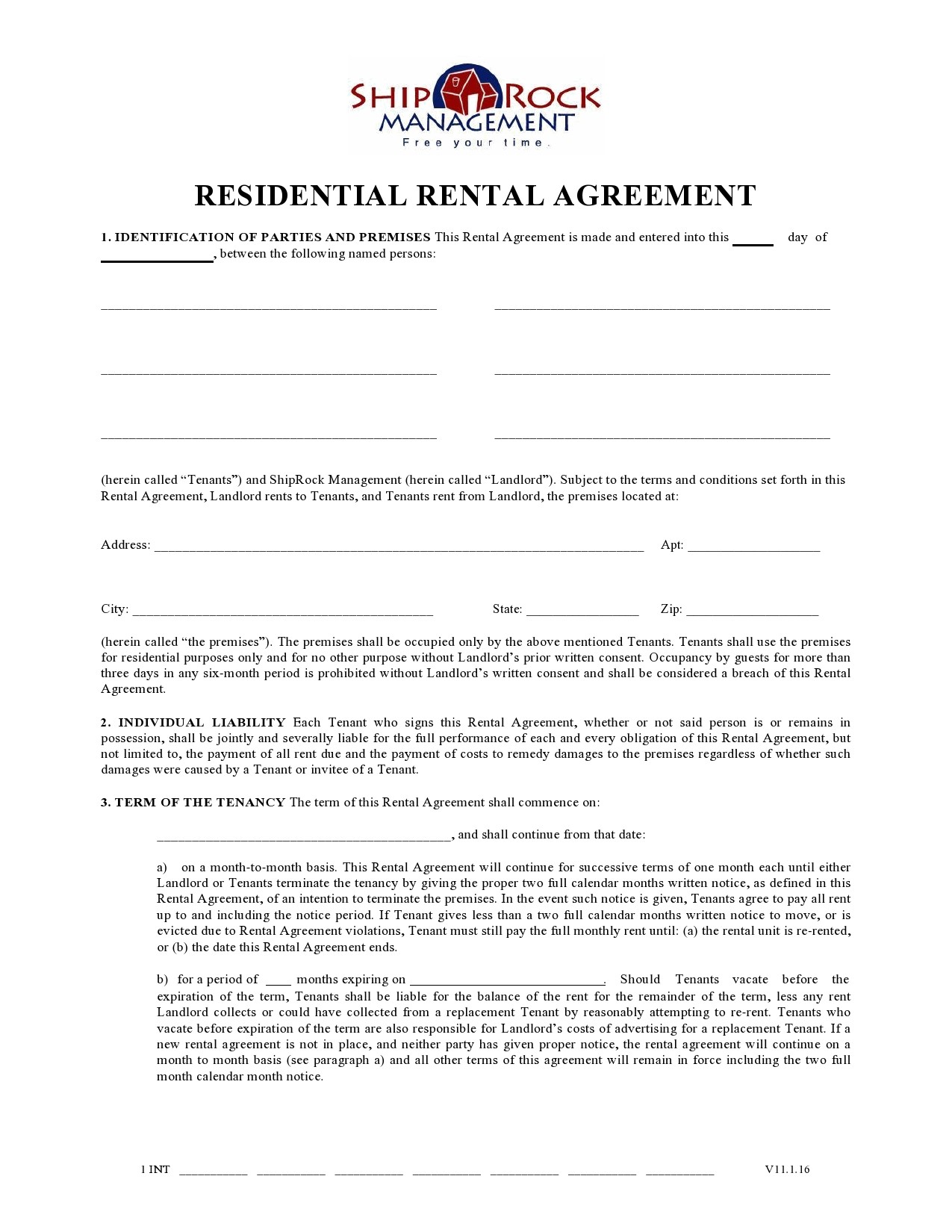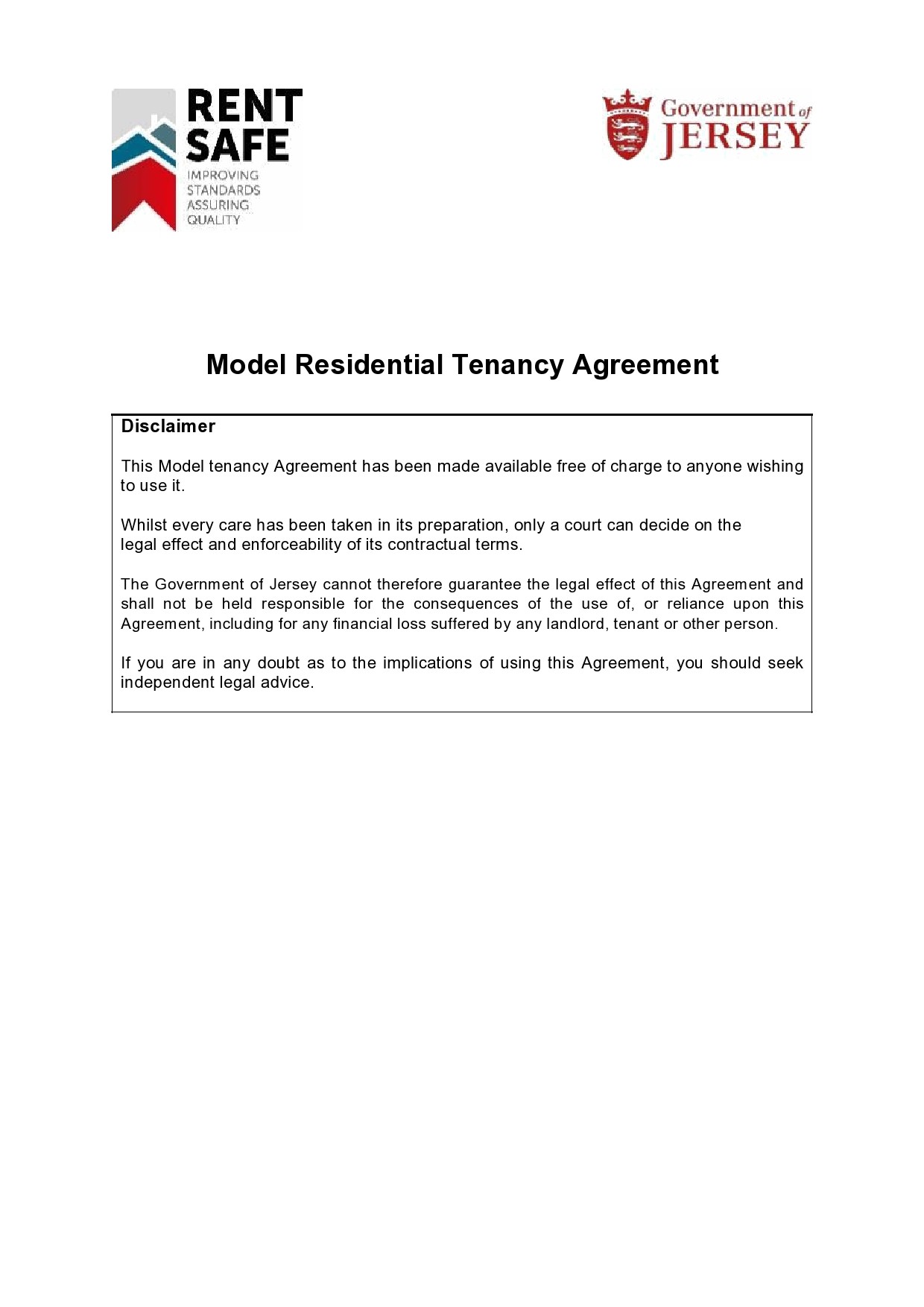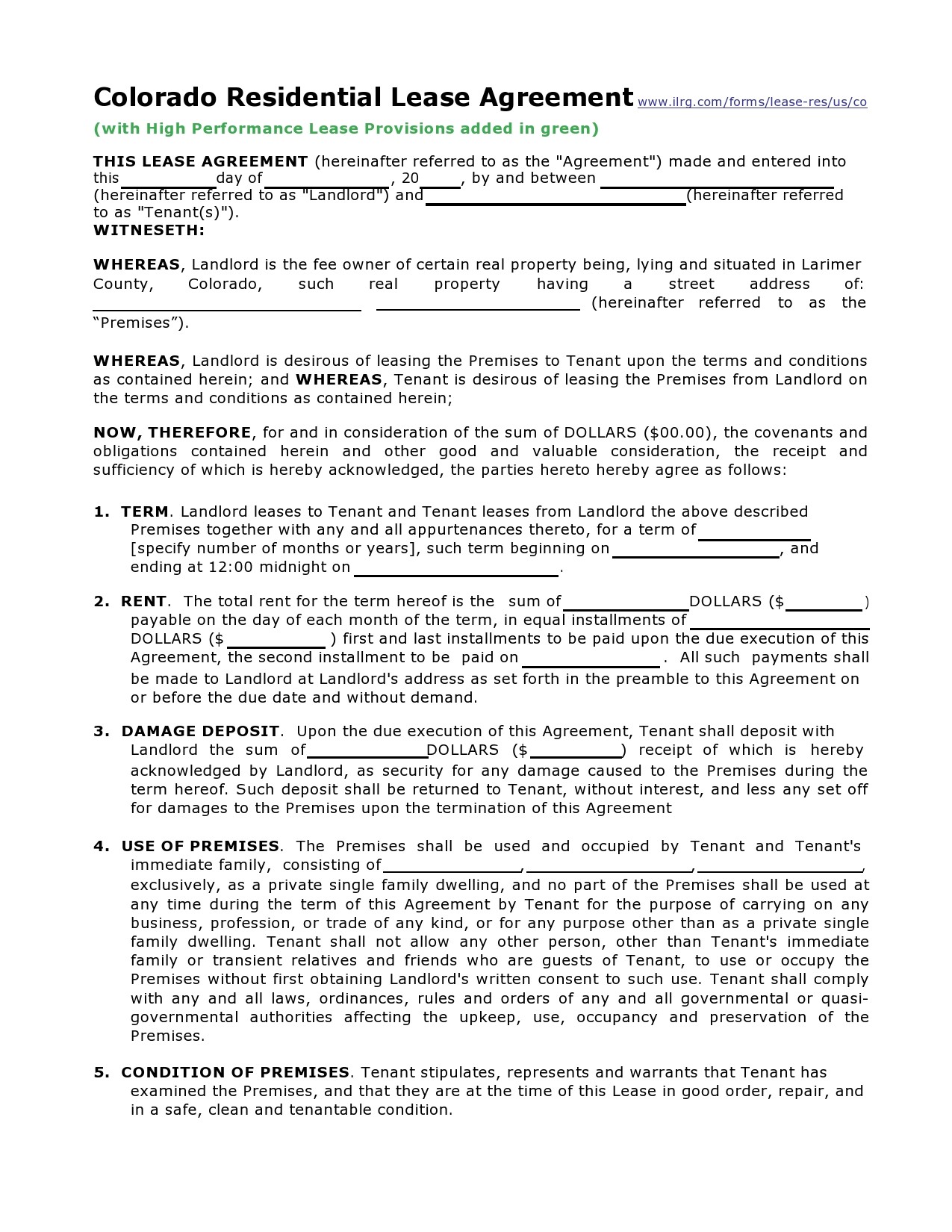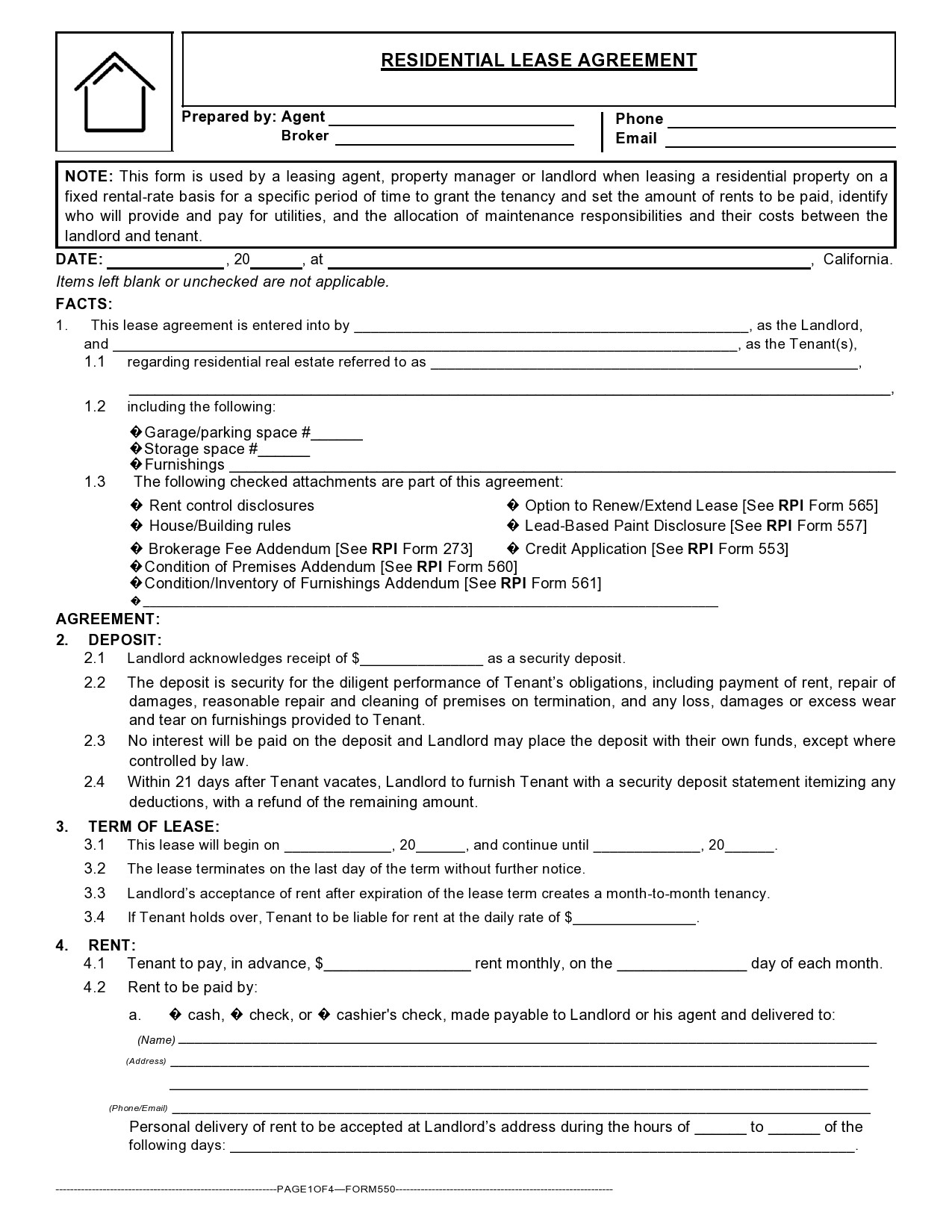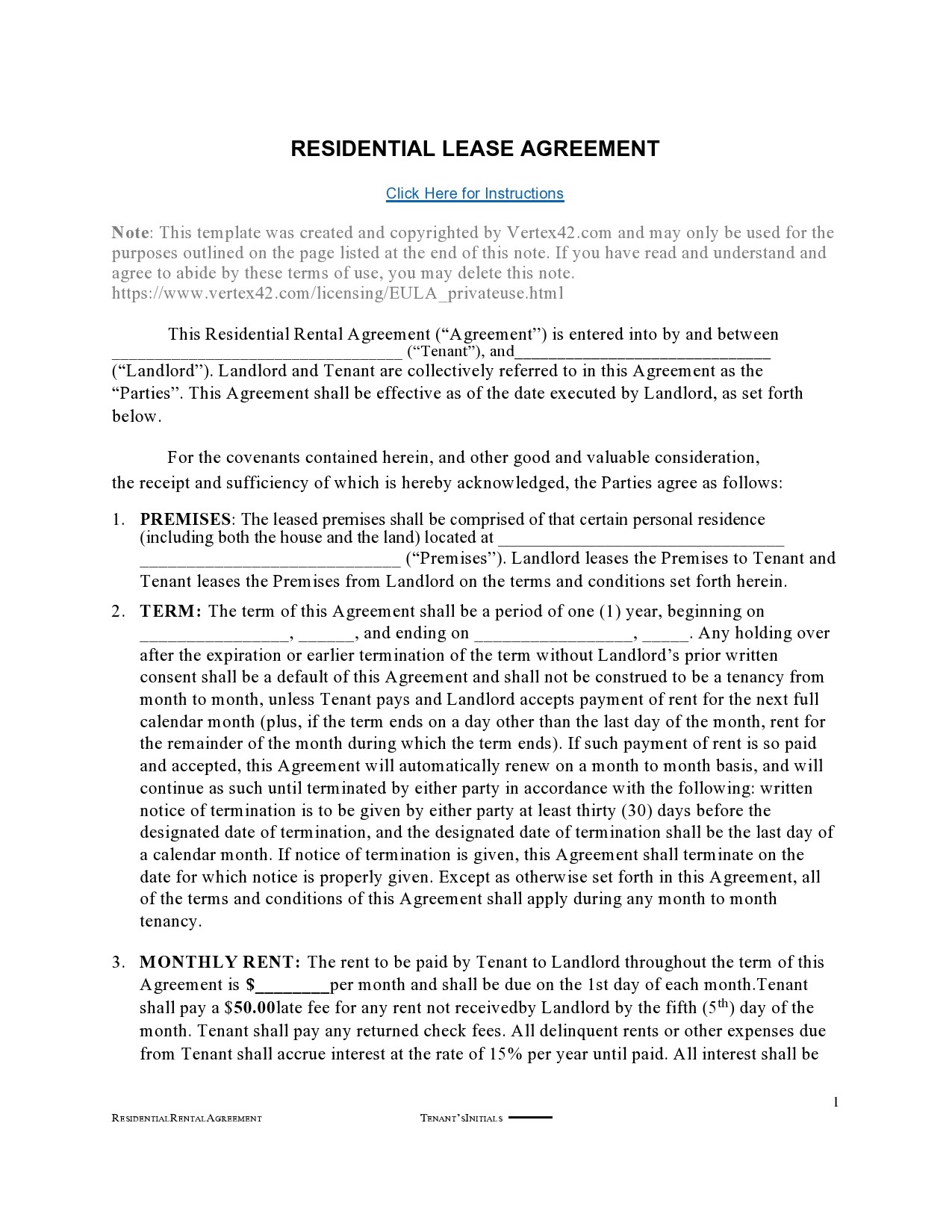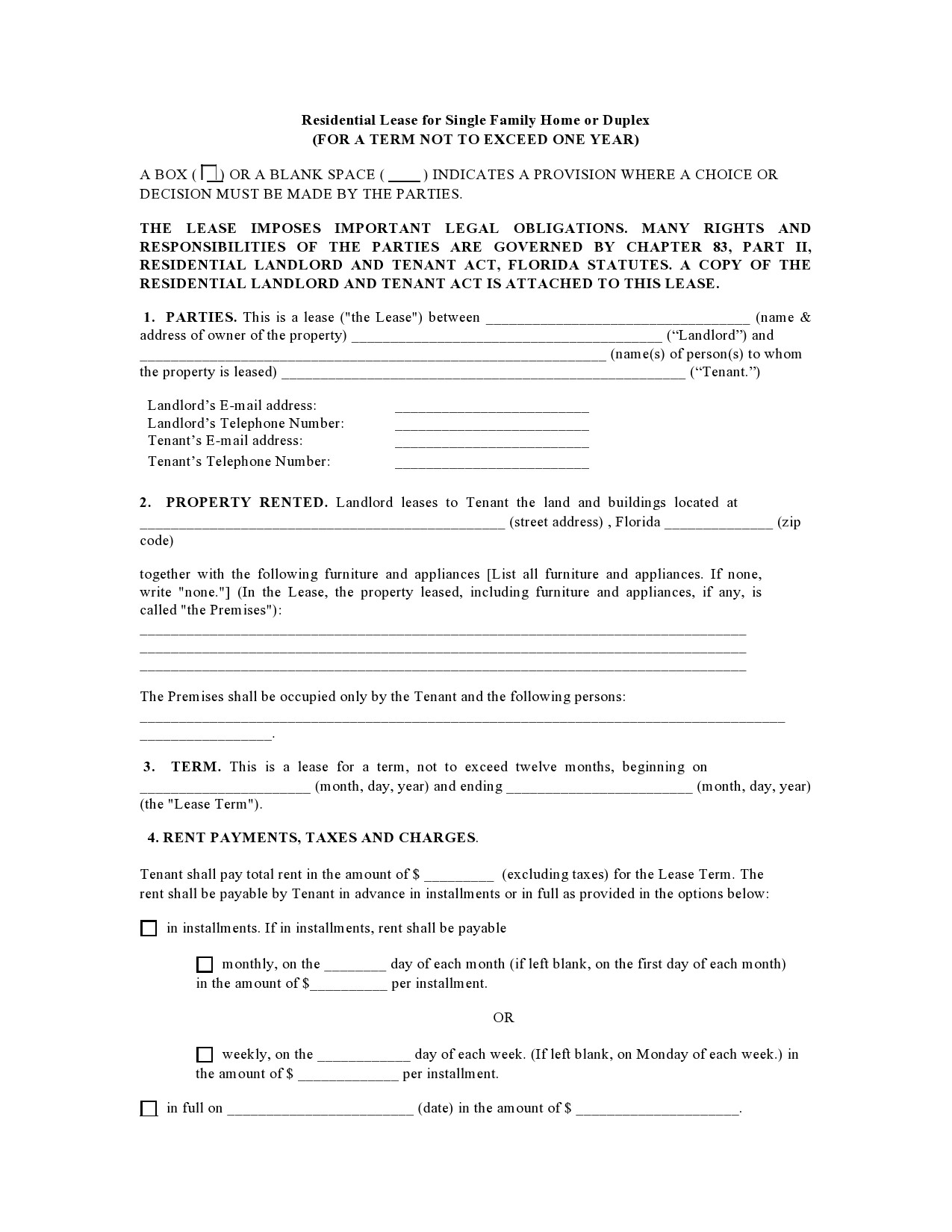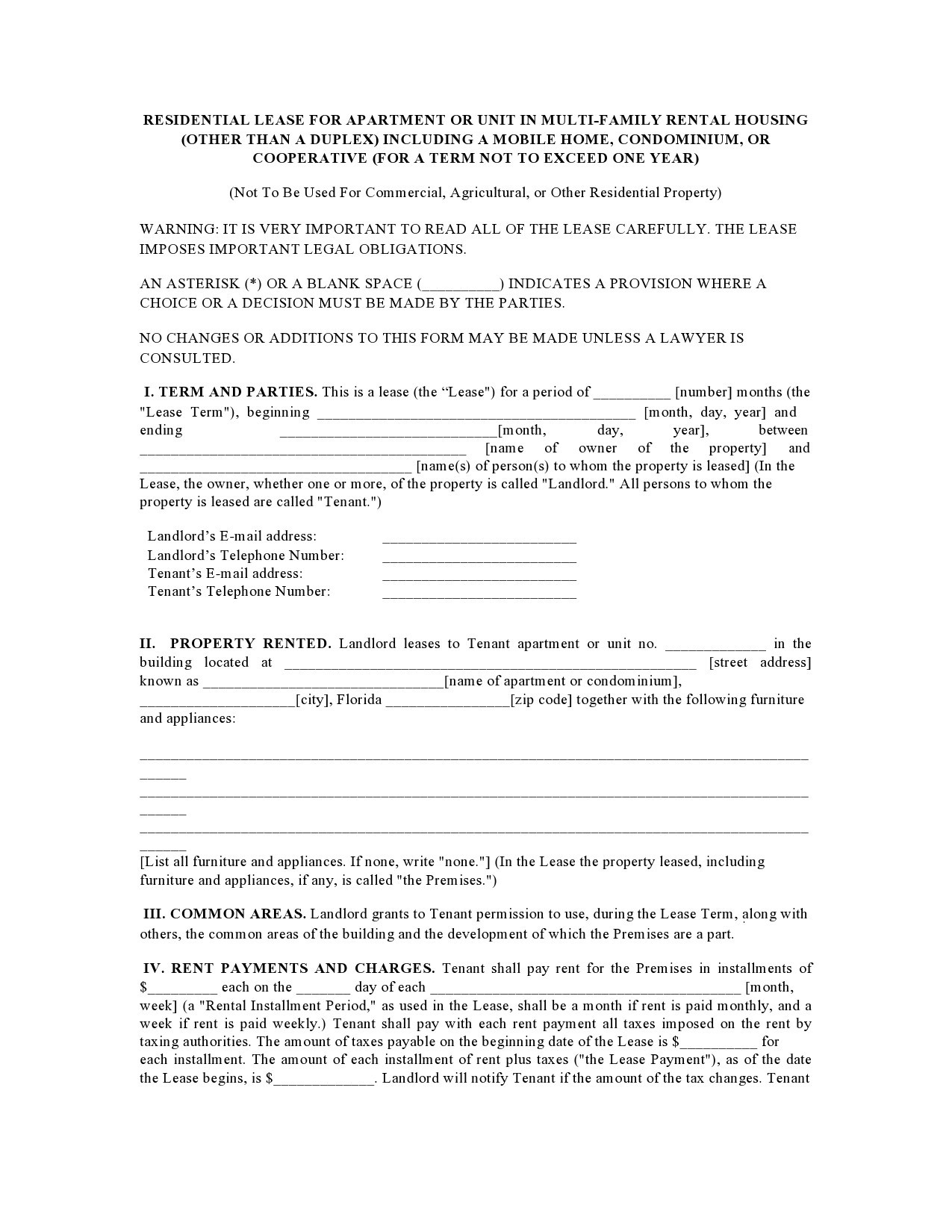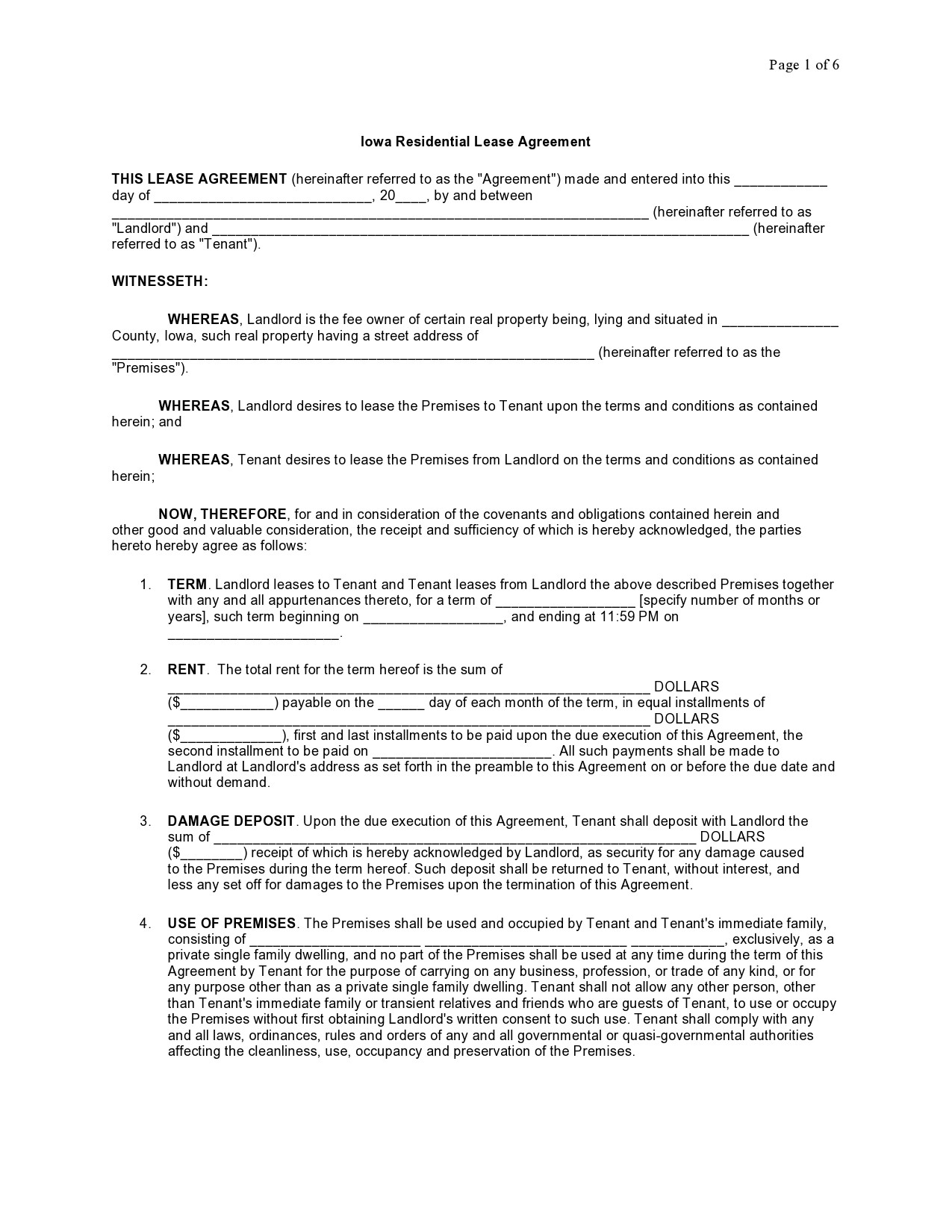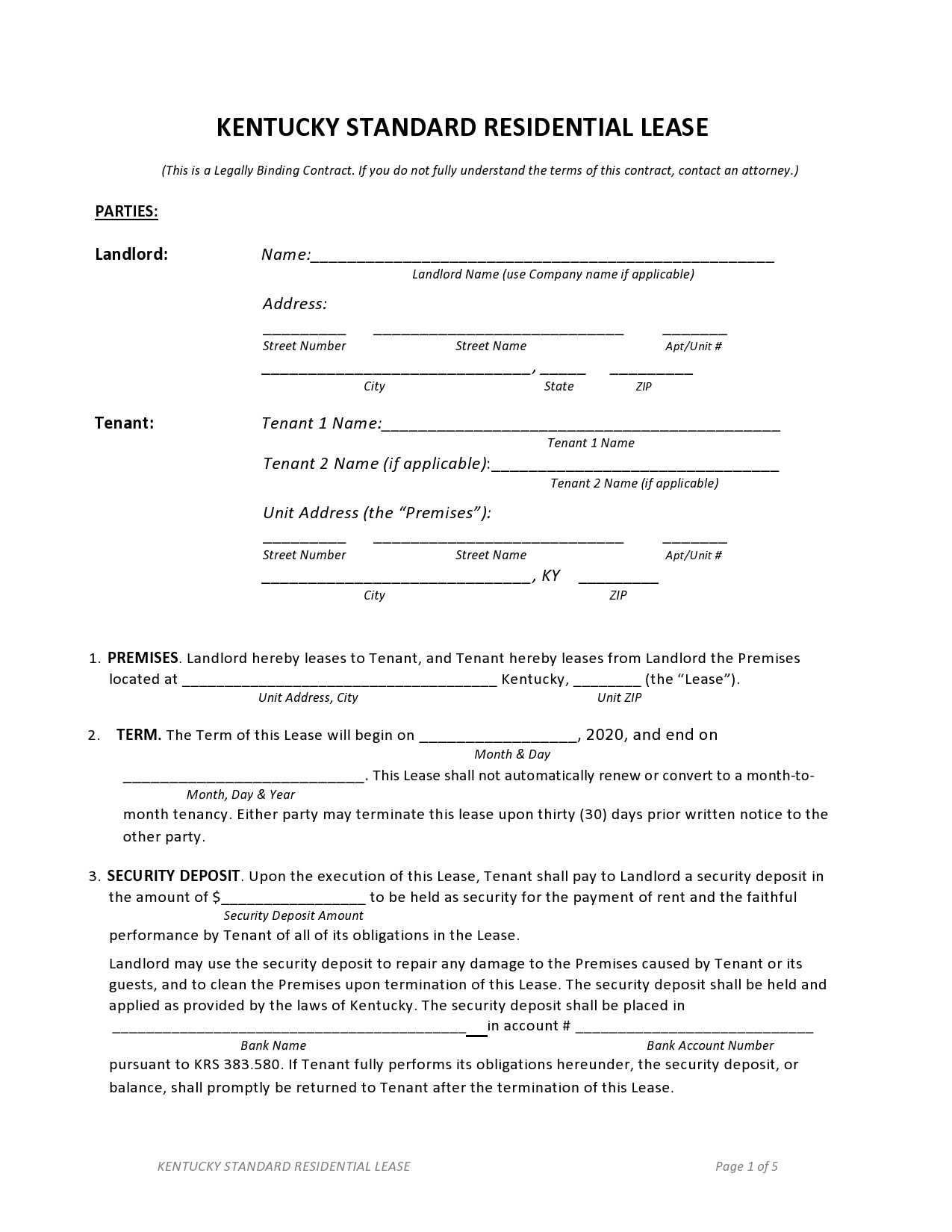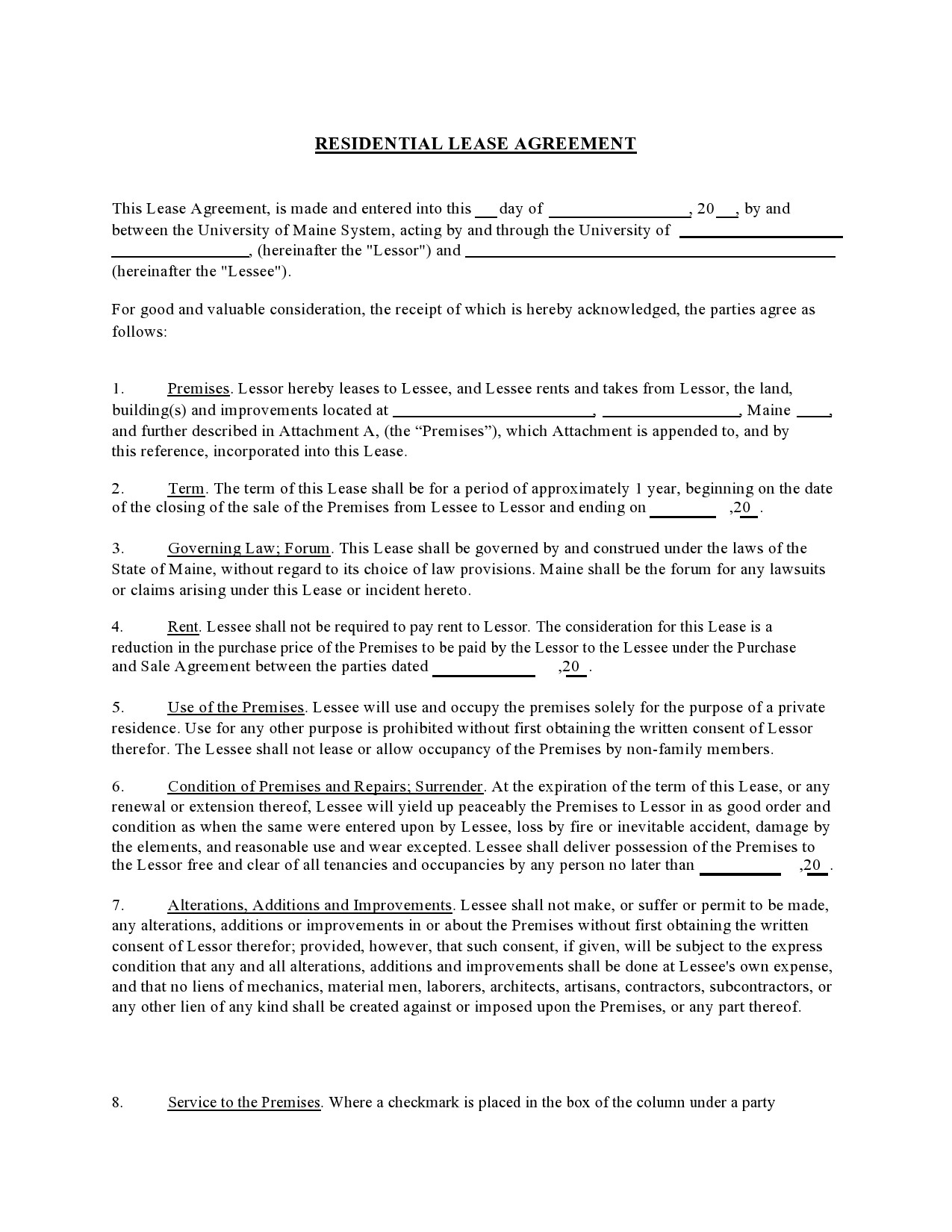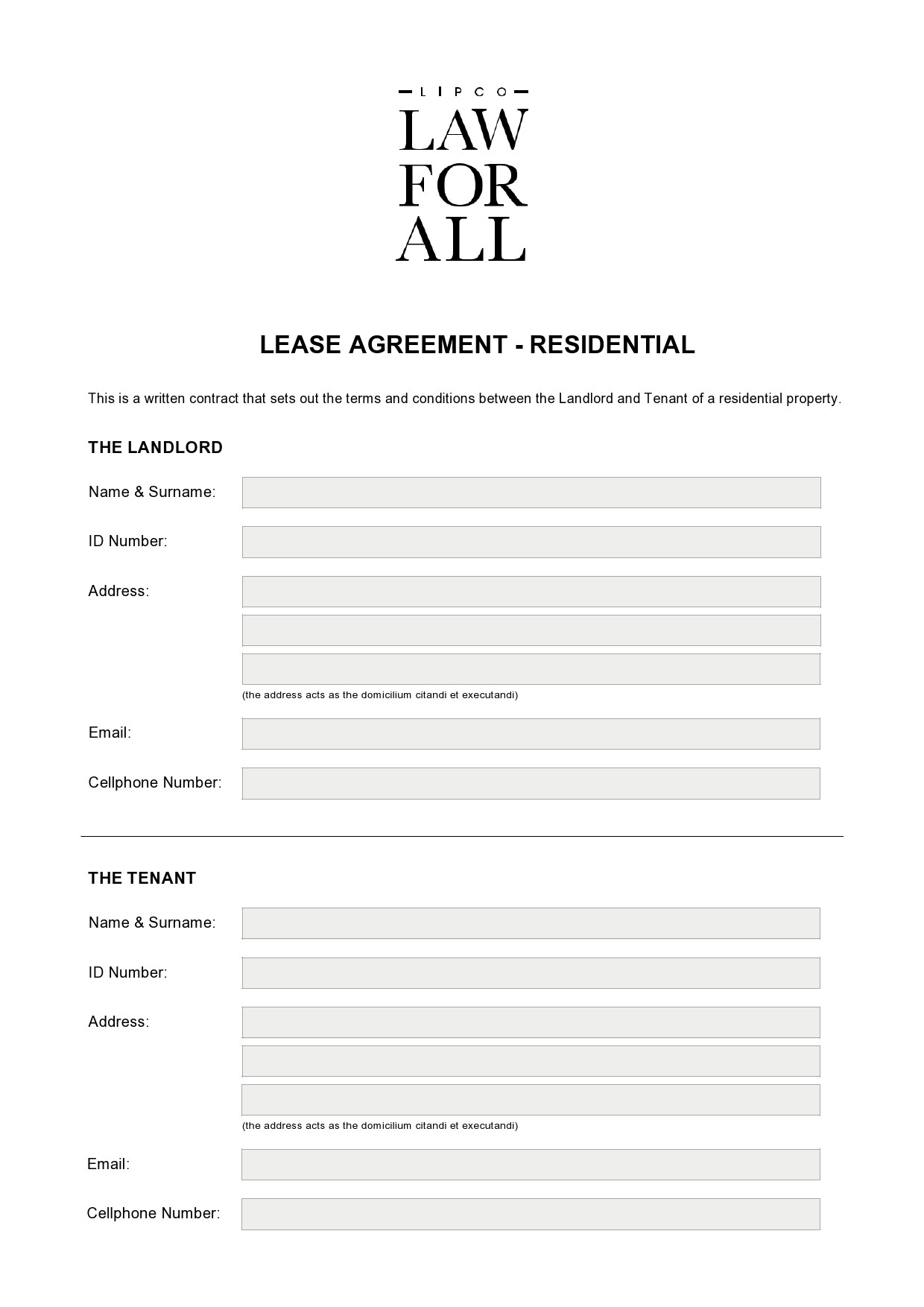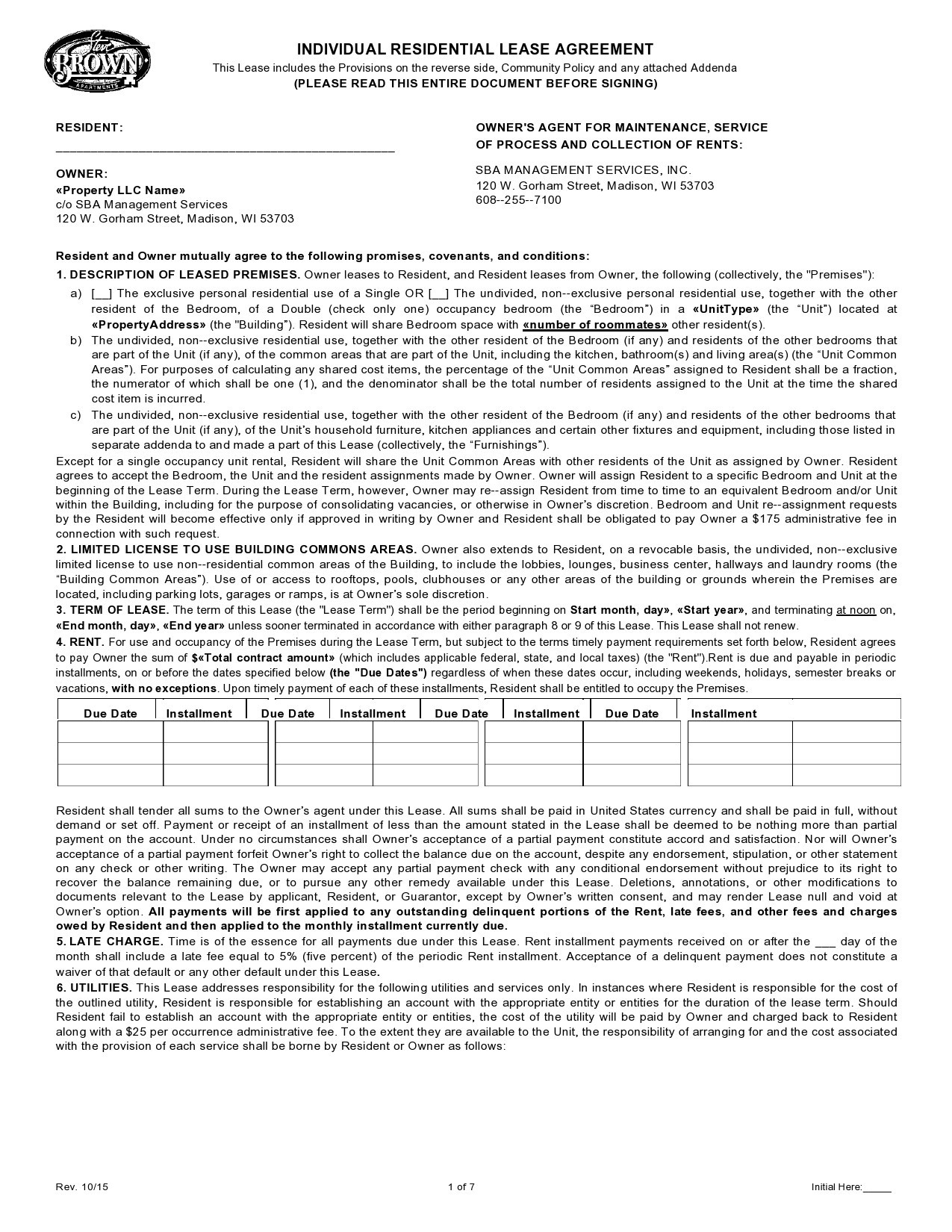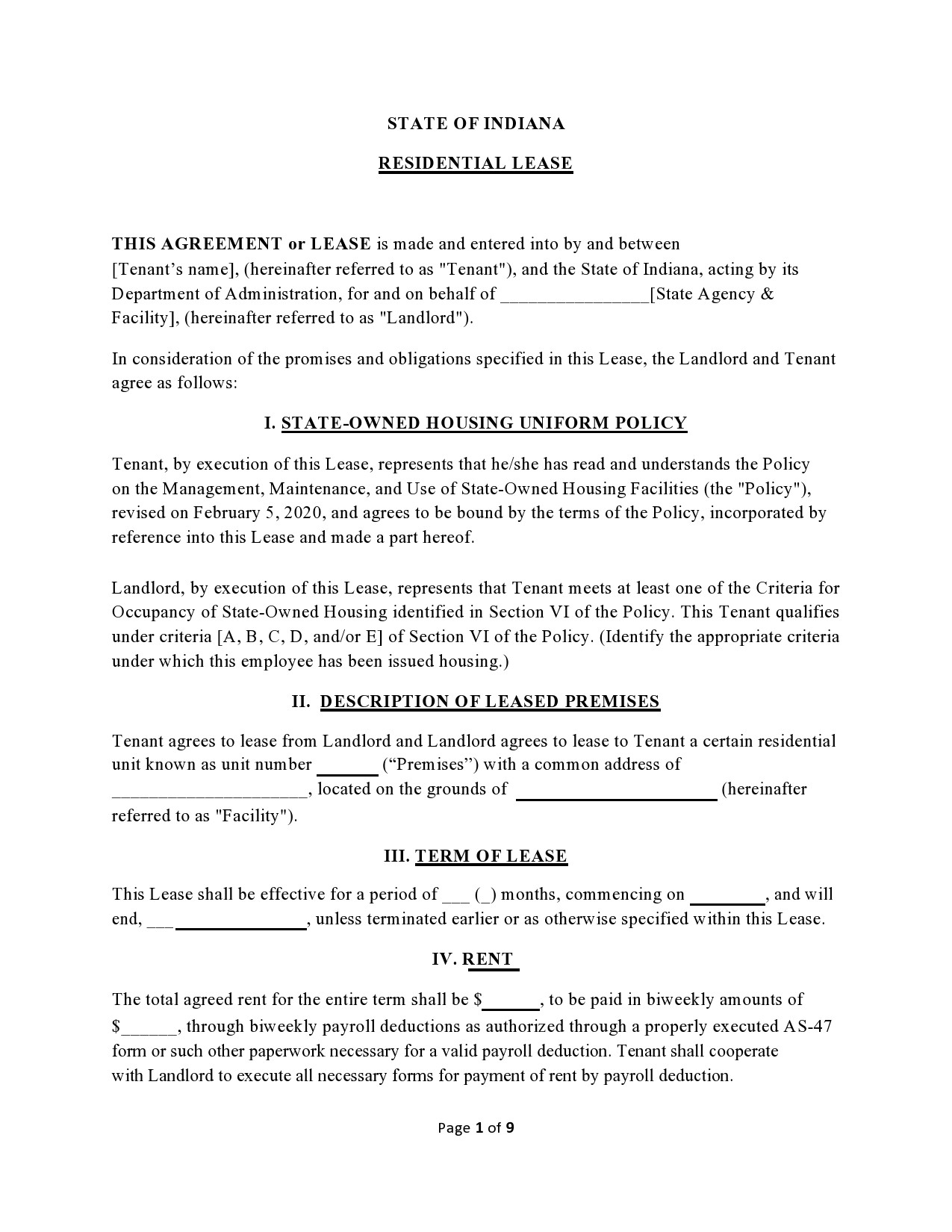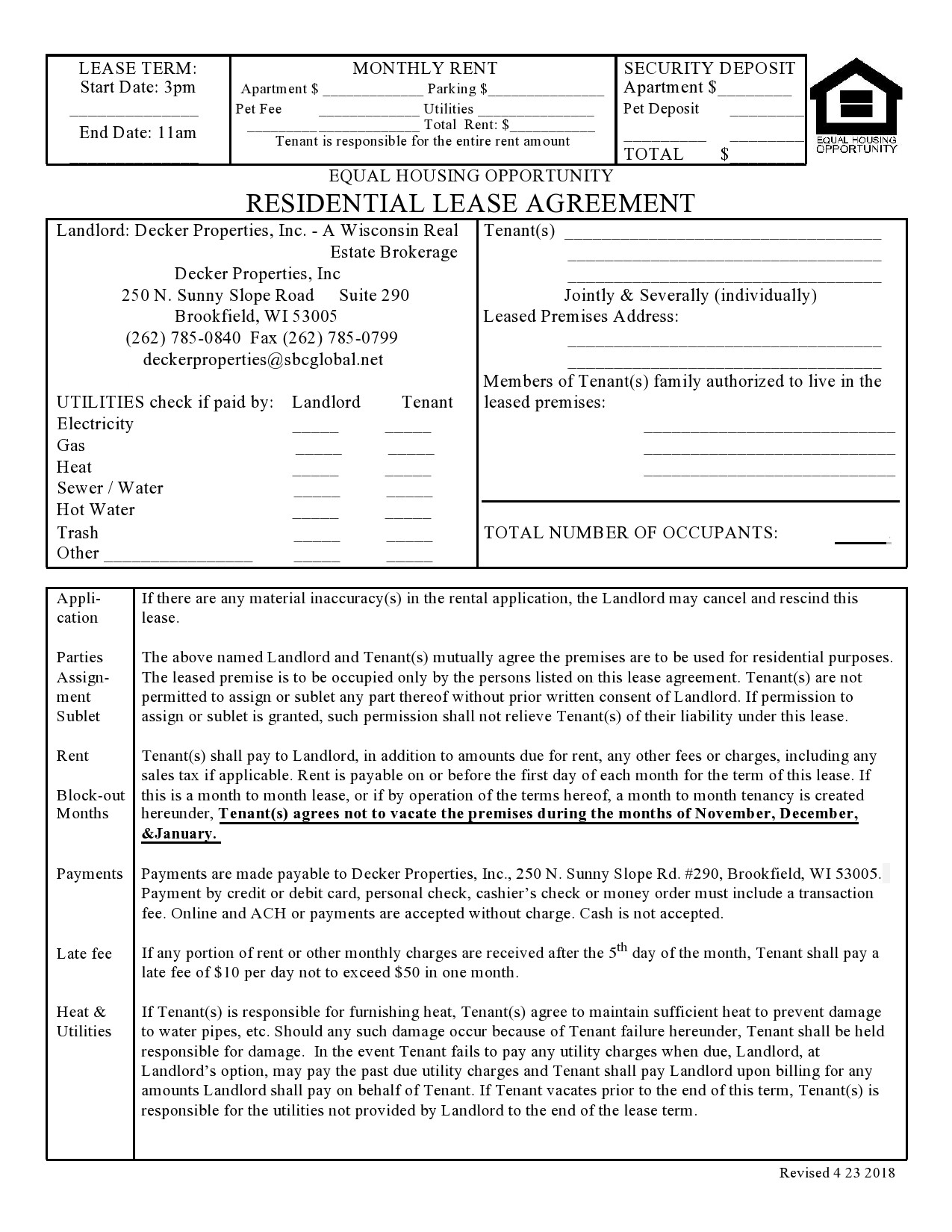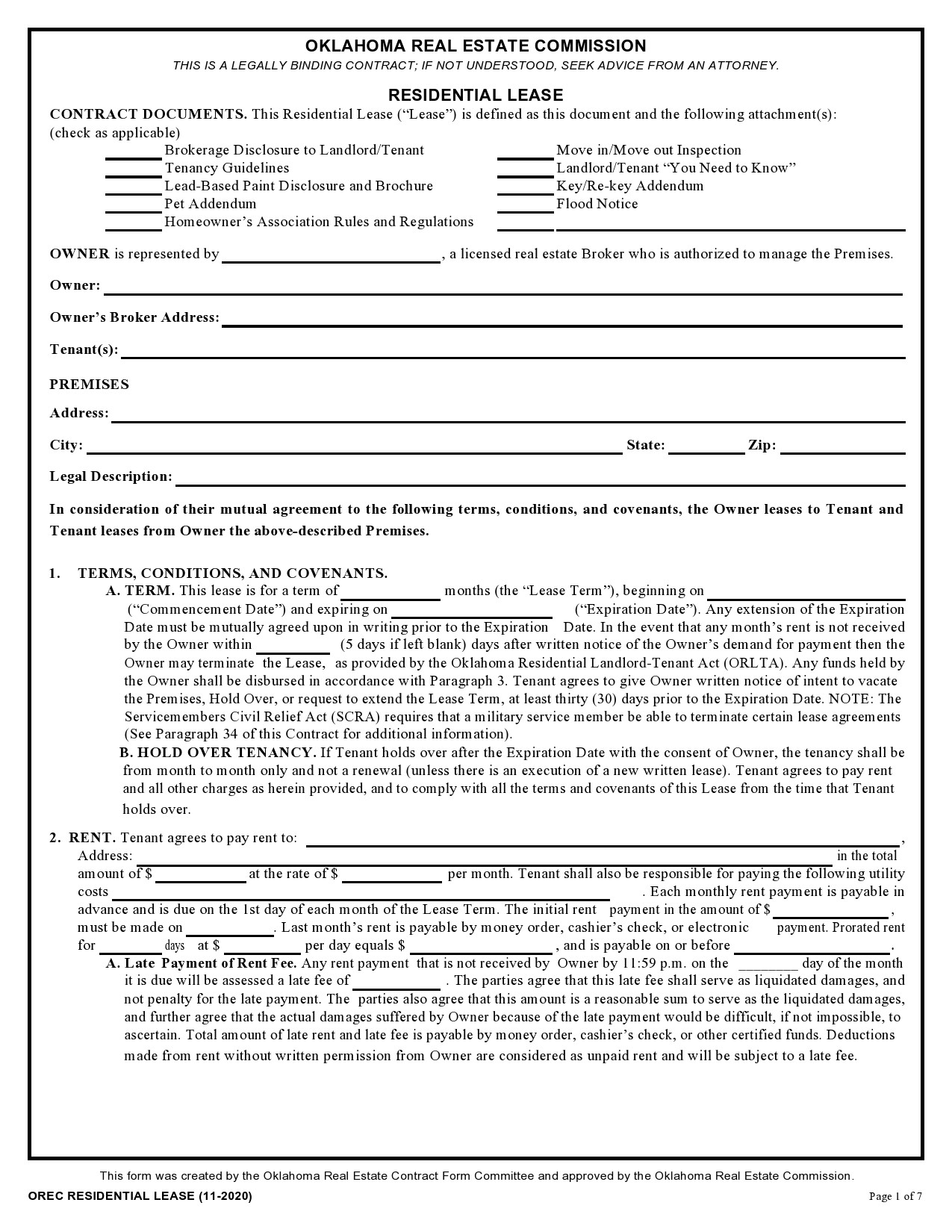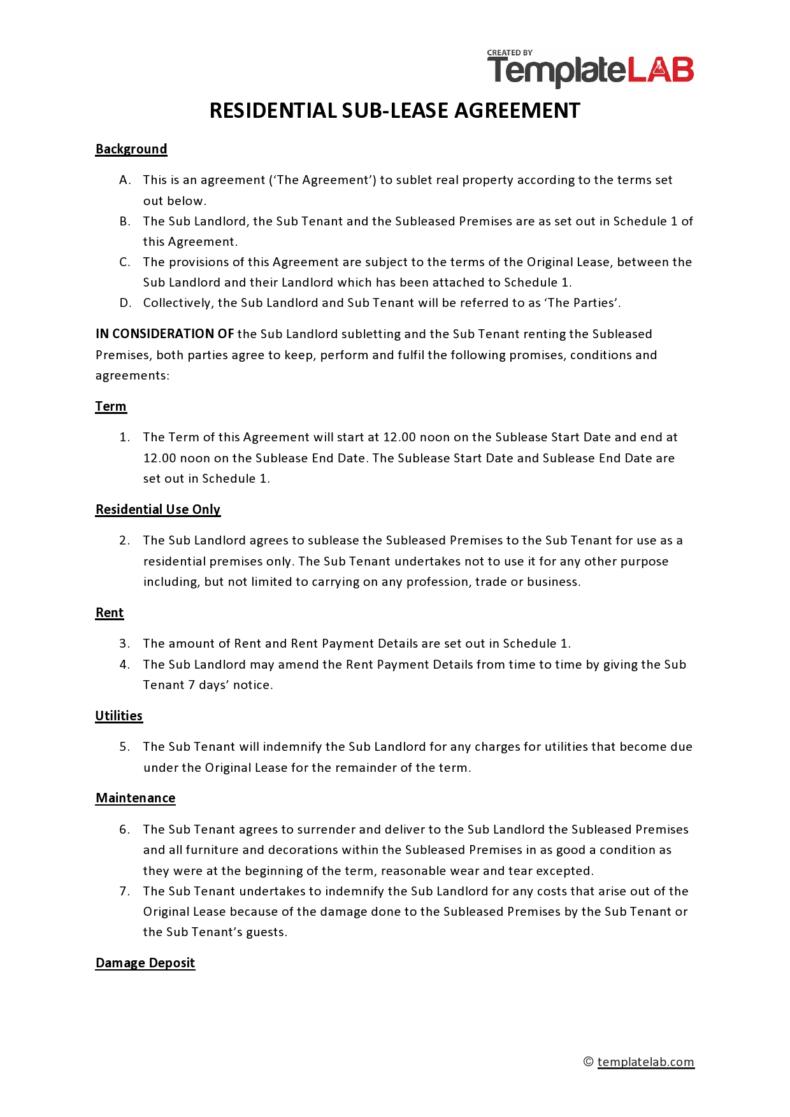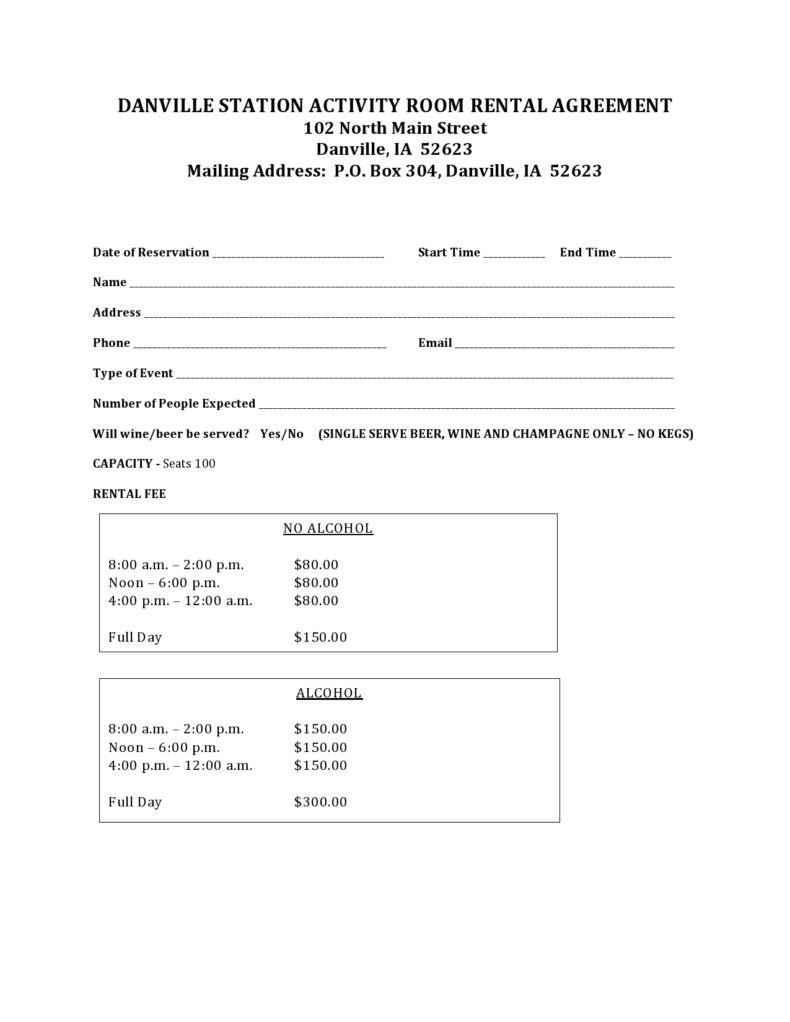Before a tenant moves into a new rental, they need to take a look at the rental agreement form with the landlord. This standard lease agreement will include the basics of their time in the renal property, talking about what the rent will be, how long the lease is valid, and which rules the tenant needs to follow.
Table of Contents
- 1 Lease Agreement Templates
- 2 What is a Residential Lease Agreement?
- 3 Rental Agreement Forms
- 4 What are the Landlord’s Obligations in a Residential Lease Agreement?
- 5 What are the Tenant’s Obligations in a Residential Lease Agreement?
- 6 Standard Lease Agreements
- 7 What Do You Write in a Lease Agreement?
- 8 How to Fill Out a Residential Lease Agreement
- 9 Who Can Live in a Property Under a Residential Lease Agreement?
- 10 House Rental Agreements
- 11 What Happens When the Agreement Ends?
- 12 What Happens if the Tenant Violates their Residential Lease Agreement?
- 13 FAQs
The tenant should take some time to read through the house rental agreement. This will help them see whether there is anything that they are worried about or simple changes they should make before moving in. Once the tenant and the landlord sign the document, the document will be active and both parties must follow the provisions inside. Let’s take a closer look at the rental agreement template to see how this can work for both parties.
Lease Agreement Templates
By State
What is a Residential Lease Agreement?
A residential lease agreement is considered a legal contract that the landlord and a tenant will sign when the tenant agrees to rent a residential property. The goal of this is to outline the terms and conditions of the tenancy while the tenant resides in the property. It will have a place for the rights and obligations of the landlord.
This is a legal document that both parties are going to work together to create and follow. This document is something that both need to follow as well. Most are fairly simple and straightforward to help make it easy for both parties to understand, though it is possible for the landlord or the tenant to add addendums to the original lease to make some changes when necessary.
The landlord will use this as a way to protect them against unscrupulous tenants, while the tenant can use this to make sure the landlord will not use unfair practices during their time on the property. Both landlords and tenants can use the residential lease agreement for many different types of residential properties. Some of these include:
- Apartments
- Houses
- Condos
- Duplexes
- Townhomes
It is important for both parties to look through the lease agreement before the tenancy begins. This will provide protection for both parties and there will be trouble if they agree to start the tenancy without this legal document in place.
Rental Agreement Forms
What are the Landlord’s Obligations in a Residential Lease Agreement?
While most tenants feel that the lease agreement is all about restricting them and telling them what to do or not to do with the property, it can actually list out some of the obligations and responsibilities that the landlord will need to follow as well. It is possible for the landlord to be in breach of contract depending on their actions. Some of the obligations that the landlord has according to the residential lease agreement include:
- Allowing the tenant the ability to enjoy the property undisturbed.
- Obligations to maintain or repair the property to make it safe for the tenant
- Give the tenant access to the property when they move in.
If the landlord is in breach of the contract, the tenant is allowed to withhold the rent until the problem is fixed since the landlord is in breach of contract.
What are the Tenant’s Obligations in a Residential Lease Agreement?
There are a few different obligations that the tenant will need to follow when they agree to do a residential lease agreement. There may be a number of different rules based on the exact lease agreement that they sign with the landlord, but most of it will boil down to:
- Paying the full amount of the rent by the due date or earlier.
- Not cause any damage to the property.
As long as the tenant is able to pay the rent and takes care of the property without unnecessary damage, then they will do fine and can get along with the landlord for the length of their tenancy.
Standard Lease Agreements
What Do You Write in a Lease Agreement?
Creating a house lease agreement is important if you would like to move into a rental property. Understanding the different parts that need to come with it will make a world of difference. The landlord and the tenant can create a lease agreement that works for their needs. some of the different pieces that are found in the standard residential lease agreement include:
- Name of the tenants and landlord: The lease agreement needs to have the full names of all parties involved. This will include the name and address of the landlord and the tenant. All tenants who will live in the property who are over the age of 18 must be on the lease.
- Description of the property: The lease agreement should specify the property that is part of the rental agreement. This can include the complete address such as the unit number or building, the street name, town, state, and zip code. If there are some specific parking spots or other locations, then these need to be added in.
- Terms of the lease: This will need to include the date that the agreement is valid, including the start and end date and the length of the tenancy.
- Rent amount and when it is due: The agreement needs to specify the amount of rent and when it is due. It can also indicate the full amount of the rent over the period of the entire lease as well as the amount that is due each month.
- Terms of the security deposit: The lease agreement will also need to specify the security deposit. This can include the amount, the date it was collected, the bank it is held in, and any reasons that deductions will be made to the security deposit.
- Repair and maintenance policies: There should be something within the lease that will help explain the policies for repairing and maintaining the property.
The landlord and tenant can determine whether they would like to add some special provisions to the lease as well. It is important for both parts to be read over and signed for the document to become legally binding.
How to Fill Out a Residential Lease Agreement
Once the tenant determines that they would like to move into the property, they will receive the lease agreement from the landlord. The first step they can follow is to look over the lease and make sure that all the provisions make sense. If something is off or not as they discussed with the landlord, they can bring it up at this time and get it fixed.
If they agree that the lease looks good, the tenant will sign the document and date it. The landlord can do the same. The tenant will pay for the security deposit, the first month’s rent, and anything else they agreed to in terms of fees beforehand. The landlord can then make a copy of the lease for the tenant to have and provide them with access to the property, usually in the form of the keys.
Who Can Live in a Property Under a Residential Lease Agreement?
Only the people who are listed on the lease can be on the property. This will include all of the tenants who are listed specifically on the lease agreement, as well as any occupants. The difference between the occupant and the tenant is that the tenant is the individual who will sign the lease agreement while the occupant is the one who will live on the property with the permission of the landlord but will have no obligations as a tenant.
For example, if you move into the property with your children, you would be the tenant and the children would be the occupants. In some cases, it can be an adult, but this is not as common.
The state you live in will determine how many tenants and occupants can be in a property before it violates the safety of the individuals or health regulations for housing. The regulations are different from one state to another, so it is best to discuss them with your landlord.
House Rental Agreements
What Happens When the Agreement Ends?
Most leases will last for a year. When it ends, the steps that are taken will depend on what the tenant and the landlord would like to see. They may agree to sign a new lease together that extends it for another year, add an addendum that will change the end date of the original lease, or they can move to a month-to-month agreement. The tenant is also able to move out and find a new home without breaking the lease at this time if they choose.
In some states, the fixed residential lease will automatically become a periodic term release when the terms are done. This means that it can become a tenancy at will when the original lease is done, lasting just as long as the landlord and tenant would like. Either party is allowed to change the terms or leave when they wish.
The tenant may also choose to leave the property. They will need to alert the landlord of their plan. In many cases, this needs to be done at least 30 days in advance to give the landlord time to make plans and find a new tenant to take over. It will also give the tenant some time to move out before the lease is completely over.
What Happens if the Tenant Violates their Residential Lease Agreement?
Most tenants will stay on good terms with their landlord during the residential lease agreement. They want to continue living in the rental unit and they do not want to find themselves evicted or without a home during that time. But there are times when the tenant will breach the terms of the agreement and it is their responsibility to correct the issue.
The way that the tenant corrects the issue can involve paying money for any damages that are caused by them or a guest. If they do not voluntarily pay to fix the issue, then the landlord can begin the process of eviction and there is the potential for a lawsuit for damaged sustained as a result of the breach.
FAQs
How long is a residential lease agreement good for?
Most of these lease agreements are good for one year and then switch to a month-to-month agreement between the tenant and the landlord. In some cases, the terms of the agreement will be longer or shorter based on what the tenant and landlord desire. Longer terms can provide consistent income to the landlord for longer while benefiting the tenant with stable rent at a lower price for longer. Since there is more risk with the shorter lease terms, the rental amount is often higher.
Do I need to notarize the residential lease agreement?
Since the lease is often seen as a short-term contract, as many only last for one year at most, you will not need to notarize the agreement. In some states, if you decide to have the lease go for more than one year, then you will need to notarize it, but this is not common. Check your local laws to see what is allowed.
Do I need a residential lease agreement before moving into a rental?
It is best for both parties to have a residential lease agreement before the tenant moves into the residential property. This will provide protection for both sides. There can be some legal implications and other complications if the rental agreement is not signed ahead of time.
Can a landlord write their own residential lease agreement?
A landlord can create their own simple lease agreement template. There are a lot of free templates on this page, as long as the landlord chooses one that is made in their state. As long as there are no provisions inside the document that is not considered legal, then this is acceptable to use. The tenant should read through the document and ask questions if they are concerned about any part of the agreement.

